

Manimahesh Trek - A Complete Guide

The Manimahesh Trek or Manimahesh Yatra takes you face to face to the Manimahesh Kailash, which is one of the famous adobes of Lord Shiva. Located in the Chamba district of Himachal Pradesh, it is also known as Chamba Kailash. The name Manimahesh is a combination of two words, Mani ( a gem/crystal)+ Mahesh (another name for lord Shiva). The Manimahesh Peak is said to have a Shiva linga in the form of a crstal or “Mani” on the top. This Mani shines very brightly at certain times when light falls on it. Some people have seen the shining lights in the morning and some have seen them at night as well. This peak is said to be the home of Lord Shiva.
One of the interesting facts about the Manimahesh Peak is that no one has ever been able to climb the summit. The height of the Manimahesh peak is around 18,556 feet or 5656 meters. People have been able to climb the various 8000 meter peaks multiple times. Therefore, the fact that the Manimahesh peak is still un-climbed is very much suprising.
The Manimahesh Lake
T he main center of attraction in the Manimahesh Trek is the Manimahesh Lake. This is a high altitude lake situated at an height of 13,390 feet or 4080 meters. This lake faces the Manimahesh Peak directly and one can get a perfect view of the peak from here. There are many legends revolving around the Manimahesh Lake. As per one of the legends, Lord Shiva performed penance on the banks of this lake. It is customary to take a dip in the holy waters of the Lake.

How to reach Manimahesh Lake? / How to do the Manimahesh Trek?
There are three routes by which one can reach Manimahesh Lake and complete the Manimahesh trek:
- The Manimahesh Yatra / Pilgrimage route.
- The Manimahesh Parikrama Route – via Kugti village.
- Manimahesh Yatra by Helicopter.
The Manimahesh Yatra Route
This is the most famous and easiest trek route to Manimahesh Lake. Every year a state wide pilgrimage is organised in the month of August and September. The official Manimahesh Yatra usually last for 15-20 days. It begins on the Shri Krishna Janamashtami every year. This day is also known as “Chota Snan”. The yatra ends on the day of “Radha Ashtami” and is also known as “Bada Snan”. The route for the Manimahesh Yatra is as below:
- Reach Bharmaur : Bharmaur is situated at a distance of 60 Kms from Chamba. It takes around 2 hours to reach Bharmaur from Chamba.
- Bharmaur to Bharmani Devi Temple & back to Bharmaur: The pilgrimage starts when you take a dip in the holy waters of the Bharmani temple kund. This is a small cemented pool filled with bone chilling cold water. It is believed that this pilgrimage is incomplete without visiting the Bharmani Devi temple and the cold bath. Bharmani Devi temple is situated near Bharmaur. One can either take a hike up to the temple which is around 5 kms from Bharmaur town. Or you can take a sharing taxi available at Bharmaur, which would usually cost around Rs 100 per person and will take you to the temple in around half hour. It will also drop you back to Bharmaur.
* It is not recommended to take your own vehicle to Bharmaur as the road conditions are really bad for now (2018). Additionally during the Yatra, there is a lack of parking space too.
- Bharmaur to Hadsar: Once you have reached Bharmaur, now you need to reach Hadsar. Hadsar is 12 kms from Bharmaur. You can either take your own vehicle to Hadsar or take a bus from Bharmaur to Hadsar. There are a lot of local buses available towards Hadsar during the Yatra period. As far as parking is concerned, there is a lot of parking space available near Hadsar (mostly roadside). However, sometimes the parking spaces might not be sufficient for the large number of pilgrims during the yatra.
- Hadsar to Dhancho: Once you reach Hadsar, the trek towards Manimahesh starts. Although there are many tents/camps available on the way, the main stoppage on this route is Dhancho. Dhancho is 6 kms from Hadsar. The trek is gradual and can be completed in 3-4 hours. There are a lot of Bhandara’s/ Langars on the way. Many people spend a night at Dhancho while others prefer to go further up.
- Dhancho to Gaurikund: From Dhancho, there are 3 routes by which one can move upwards. The extreme left route via “Shiv Gharat”is the most preferred and recommended as it is well maintained and has shops/tents on the way. “Shiv Gharat”is the place where one can hear the sounds of drums in the mountain. The next main stop would be “Gauri kund”. Gauri kund is situated around 6 kms from Dhancho and is believed to be the place where Goddess Parvati used to take bath. Men are forbidden to even look inside Gauri kund ad only women can take a dip in its holy waters. There are a lot of camps and tents available for stay near Gauri Kund.
- Gauri Kund to Manimahesh Lake: The distance from Gauri Kund to Manimahesh Lake is around 1 kms. Once you reach near the holy Manimahesh Lake, you’ll see the clear view of the Manimahesh peak (if the weather is clear). It is a custom to take a dip in the holy waters of the lake and take Lord Shiva’s blessings.
The Manimahesh Parikrama Route - Via Kugti Village
As the name suggests, the Manimahesh Parikrama route takes you on a full circular trip around the magnificent Manimahesh Kailash mountain. As per an approximate calculation, the whole distance covered in this route is around 38-45 kms. In you choose this route, you’ll see everything from the quite and serene village of Kugti, lush green valleys, cold water streams, Gaddi camps, rocky terrain and glaciers. You’ll even get to cross the high altitude Jotnu Pass (Jot Parvat). Below are the main stoppages on this route:
- Bharmaur to Hadsar: Same as the popular Manimahesh Yatra route, the Parikrama also starts from Hadsar. However, instead of going towards Dhancho, you’ll have to continue on the road ahead.
- Hadsar to Dharol to Kugti village (12 Kms): From Hadsar, there are a very few transport options available towards Dharol and Kugti village. A very few buses go towards Dharol which is 6 kms from Hadsar. Another 6 kms further lies the village of Kugti.
How to reach Kugti village from Bharmaur/Hadsar? Public transport service are very rare on this route. Therefore, you have two options:
- Hire a cab from Hadsar or Bharmaur to Kugti village. You’ll still have to walk around 1 -2 kms as the road has still not reached the Kugti village.
- Hike all the way from Hadsar to Kugti and hope that you’ll get a lift. However, there are a very few vehicles travelling on this road. The chances are you’ll end up walking all the way to the village. This whole stretch will take you around 3-4 hours of hiking. Once you reach Kugti, rest for the night. * Please note that there are no hotels in Kugti village as per now. You can either stay in the house of the very hospitable locals. Just ask politely about stay options and someone might offer you a stay. Another option is to pitch your own tents near the village.
- Kugti to Dhalotu to Alyas: We recommend hiring a guide from Kugti village as you might get lost on the trail. There are other trekking routes from Kugti and a guide will definitely be helpful if you are in this valley for the first time. However, if you still choose to go without the guide, remember a golden rule for this trail “ Always choose the Right path! “. It might sound philosophical, bu we are referring to the direction “Right”.
The next stop would be Dhalotu. Dhalotu is a small but beautiful place above Kugti village. This is probably one of the most attractive places in this trek as you would see lush green valleys and meadows here. After Dhalotu, you’ll cross a small but dense forest and climb down towards the river stream. You’ll walk by the river stream for a few kms, before the trail takes you to Alyas. Alyas is the place to set up your camp or stay in a tent available there. The locals have camps set up at Alyas during the Yatra period. It will take you around 6-8 hours to reach Alyas from Kugti village. You can recognize Alyas by the presence of a giant rock colored in saffron, known as Hanuman Garhi or Hanuman Shila. This is sacred among the locals and is believed to protect the travelers in the Manimahesh valley.
- Alyas to Jotnu Pass to Kamal Kund to Manimahesh Lake: It is recommended to leave Alyas early in the morning at around 7 am, so you can reach Jot Parvat/Jotnu pass before 10:00 am. This is because the weather is most favourable in the morning and if it starts snowing on Jotnu Pass, then making the descent towards Manimahesh lake becomes difficult and dangerous. It would take around 2-4 hours to reach Jotnu Pass. On the way you’ll also be able to see the “Ganesh Kund”, which is a small water body formed mostly because of the nearby glaciers. Once you reach at the top, you’ll see the “Dham Ghodi” which is a rock standing near the pass and is very sacred to the locals. After you start climbing downward towards the Manimahesh Lake, you’ll have to cross a glacier. Manimahesh lake is visible from Jotnu Pass, therefore you can find the walking trail easily. It would take another 2 hours to reach Manimahesh Lake. On the way you’ll also see “Kamal Kund” which is a sacred lake situated at the foothills of Mount Manimahesh. From Kamal Kund, it would take another half an hour to 45 minutes and you’ll finally reach the Manimahesh Lake.
- Manimahesh Lake to Hadsar: Although, you have reached Manimahesh lake now. However, in order to complete the sacred Manimahesh Parikrama, you’ll need to climb downhill towards Hadsar via Dhancho. This would be a 3-5 hours downhill journey and the Manimahesh Parikrama is hence complete successfully.
Manimahesh Yatra by Helicopter
This is the easiest way to reach Manimahesh lake. The Helicopter service is available only during the Yatra period. One can board the Helicopter from Bharmaur and in around 7 minutes, the helicopter takes you to Gauri Kund. You’ll still have to climb from Gauri Kund to Manimahesh Lake to complete the pilgrimage. The distance is around 1 kms, and after completing the pilgrimage you can board the helicopter back to Bharmaur.
We hope that this article has been helpful to you and in case you have any further questions or suggestions feel free to comment below. Also, we would appreciate if you would like to share your experiences on the Manimahesh yatra with all our readers. Feel free to share this article on Facebook, twitter or any social platform as you like.
Share this:
- Click to share on Twitter (Opens in new window)
- Click to share on Facebook (Opens in new window)
- Click to share on WhatsApp (Opens in new window)
- Click to share on Tumblr (Opens in new window)
- Click to share on Pinterest (Opens in new window)
- Terms of Service
- Privacy Policy
For Trip Enquiries: [email protected]
For General Enquiries: [email protected]
For B2B Enquiries: [email protected]
- +919816781007
- Login / Register

- Scuba Diving
- Lakshadweep
- Andhra Pradesh
- Scubadiving
- West Bengal
- Arunachal Pradesh
- Uttarakhand
- Passionate People
- United Kingdom
- Northern Ireland
Join Our Newsletter
Join our subscribers list to get the latest news, updates and special offers directly in your inbox
- Experiential
Jotnu Pass - Manimahesh Trek
Manimahesh is the abode of lord shiva in the form of mani - mahesh , reaching his abode, kailash after a circumambulation around the chamba kailash peak, by crossing over high altitude jotnu pass or dham ghodi pass is an adventurous and memorable experience.
“ The mountains are calling and I must go”
- John Muir -
It’s a highly compelling quote that says it all for many outdoor lovers, which may explain that you can't resist staying without them. So happened to me when I got a request from a group of ardent believers of Shiva and avid senior 7 trekkers aged 60 years from Bangalore and above to lead the group, who had successfully completed Amarnath , Mount Kailash - Mansarovar Yatra , Inner Kora Parikrama, a dozen times and who got motivated by other Abodes of Lord Shiva - Kailash, to explore. The region was Himachal and Kinnaur!
After a consensus. we finalized the plan to start with High Attitude Jotnu Pass 14300 feet - Manimahesh Trek , Kinnaur Kailash 18,500 feet ( Pillar ) Trek, and Shrikhand Mahadev 17,200 feet Trek or Shrikand Mahadev Trek in the month of June and July. It was a highly responsible job and really tough because all three were very challenging treks to attempt in one go, and considering the member's age group, where the right attitude, health conditions, and fitness levels are high criteria.
After an overnight journey by train from Delhi, we reached Pathankot Cant Railway station, which is the nearest railhead. We followed the below itinerary for Jotnu Pass/Dham Ghodi Pass - Manimahesh Trek
Day - 01 Pathankot and drive to Bharmour (Distance 185 km 6 hours )
We started our journey after a breakfast of Parathas in a Dhaba. After 6 hours,0f scenic journey by road we reached Bharmour by afternoon. Located between the Pir Panjal and Dhauladhar range with Ravi and Chenab rivers flowing on both sides We checked into a hotel. prebooked with basic amenities. After lunch, we rested for a while.
In addition to abundant alpine pastures, lovely apple orchards, Deodhar trees, and terraced farmlands, Bharmour is popularly known for its ancient temples. A cluster of 84 temples are collectively called ‘Chaurasi’ , and this is a huge pull among locals and tourists. According to local folklore, Bharmour is supposed to belong to Lord Shiva, which is why Bharmour is sometimes also referred to as the Shiva Bhoomi – the abode of Lord Shiva and its residents as ‘Kailash Vasi’ – people of Kailash. The temple complex was at a walkable distance from our place of stay.

Chaurasi Temple And Tales
Chaurasi temple complex comprises 84 big and small Shivlinga-style temples. The temple complex is said to have been built approximately in the 7th century, in a scenic backdrop of Bharmour, although minor repairs have been made to the most temple over the years. The temple offers a scenic view of valleys and flowing streams.
Manimahesh Temple
Shikhara-style temple of Lord Manimahesh enshrined with a huge Shiva linga is located in the center of the Chaurasi temple complex. The legend has it that a group of 84 Siddhas who were traveling from Kurukshetra to Manimahesh (lake in the Pir Panjal range at Bharmour) halted here (at Chaurasi temple complex). The Siddhas fell in love with the solitude, calmness, and beauty of Bharmour and reconciled here in meditation.

Ganpati Temple
It is dedicated to Lord Ganesha. The temple is placed at the entrance of the temple complex. It is believed that during Kira's invasion of Bharmour, the Ganpati temple was set on fire and the legs of the idol were mutilated. Today, the Ganpati temple is enshrined with a bronze, life-size idol of Ganesha that has both legs missing.

Dharamraj Temple
Situated on the northern corner of the Chaurasi temple complex, the temple is dedicated to Dharmeshvar Mahadev. The temple of ‘God of final justice’ Dharmaraj is called as Dhai-podi (two and a half steps) by the locals. There is a belief among the locals that each departing soul has to stand here in front of this temple and seek Dharamraj’s final permission to travel through the temple and dwell in the Shiva Loka (Shiva’s own country) after death.

Lakshana Devi Temple
Believed to be the oldest of all 84 temples in the complex, the temple is enshrined with four armed Mahishasuramardini form of Goddess Durga. The temple is beautifully made and has an immaculately carved entrance.

The temple ascribed to meruvarman is an exquisite specimen of Gabled pent roof temples in the region. The temple is Sandrara faces North and consists of a rectangular Sanctum preceded by an ablong triple bayed mandapa fronted by a pair of pillars. The pillars and ceiling of the mandapa and doorways with wooden construction. It is crowned by an impressive gabled trefoil arch with a figure of 12 armed Vishnu on Garuda his celestial vehicle. The Garbagriha enshrines a bronze idol of Mahishamardhini labeled Lakshana Devi. The doorway is decorated with artistic carvings and floral reliefs The temple is dated to Circa AD 700 and is declared as a protected monument by Archeological Survey of India.
Narsingh Temple T his temple has an awe-inspiring bronze idol of Narasimha, the half man-half lion incarnation of Lord Vishnu.
The location has so much positive vibes that we did not feel like returning back after the Aarti at 8 pm we, reached our hotel.
Day - 02 Bharmour – Brahmani - Bharmour - Campsite Lahal (12 Km Trek & 24 Km by Taxi)
Before heading to the mountains, we decided to go on an acclimatization walk to Baramani Mata Temple. We hired local sumo to drop us to a place called Lahal, from there temple is a 3 km trek. We passed through the trail full of pine and deodar trees, with hamlets located on a hilltop facing mountains.
According to a local legend and people believe that the Bharmour was called the Brahmapura after Bharmani Devi . When Lord Shiva went to Manimahesh Kailash granted a boon to goddess Bharmani Devi that all persons intending to go on pilgrimage to Manimahesh must have a dip in their holy pool. Failing this, their pilgrimage would not be acceptable to Lord Shiva. That’s by every visitor firstly take bath in Bharmani’s holy pool before Manimahesh Lake.
The view of the Dhauladhar range with snowclad mountains was a pleasant sight.

Hookah the favorite pastime of Himachal folk

The view of the Dhauladhar range with snowclad mountains was a pleasant sight. We could even see the fascinating view of Budhal valley from Bharmani Devi Temple

According to a legend Goddess was residing at Bharmour in Chaurasi temple complex before the advent of pilgrims. When Lord Shiva first appeared in Bharmour, the Goddess shifted her seat to the hilltop known as Bharmani. Lord Shiva granted a boon to Bharmani Devi that all persons intending to go on pilgrimage to Manimahesh must have a dip in the Bharmani pool. Failing this, their pilgrimage would not be acceptable to Lord Shiva. Since then it is a ritual to visit Bharmani Devi, before the journey to Manimahesh.
After taking a dip in the ice-cold natural spring, we prayed obeisance to Lord Shiva and Bharmani Mata for a success.

After having prasad, as lunch at the temple we spent time till evening, later we walked to Bharmour and reached before dark. We repacked the rucksacks and slept early since we had to start early.
Day - 03 Lahal - Kugti Village - Kartik Temple - Dalotu Camp (09Km Trek)
The morning we woke early, porters and guides were ready. We had a quick breakfast and started our journey. As per the itinerary, we had planned to go by vehicle beyond Hadsar and then commence the trek. The whole journey was through hills, parallel to the Chamba river. after Hadsar, we had a glimpse of snow-clad Chamba Kailash peak, It was indeed a rare sight, the mountain resembling the face of Lord Shiva.

The vehicle came to halt after, 17 km, the hilly road was broken due to rains. We decided to walk, carrying our rucksacks. After 1 hour of trek, we reached kugti village, located overlooking the valley. After crossing the river over the bridge we continued our journey.

Our guide Himveer took up to Kelang Wazir, which was a 4 km detour from the main trail. It is said that it is customary to pay obeisance to Lord Karthik Swamy before heading to Manimahesh.
After a steep climb, we reached the temple. The temple located at a scenic location, we had grand views of the valley, The trail from here bifurcates to Kugti pass leading to Lahaul valley.

We took the trail to the right, after a steep descent to the river bed, after crossing the bridge we entered the pine forest. One of the members walking in the front was fortunate to sight a brown bear, which was a common sight in the valley.
After a steep climb, we reach the campsite, Dolutu at 4 pm. Porters had reached the campsite well in advance, we were served hot tea and biscuits. Though it was bright in the day, there were little showers in the night as it was rainy season. After a hot dinner, we retired in our respective tents.

Day - 04 Dalotu - Padhar Goth - Alyas Base Camp (07Km Trek)
We woke early, we were served hot tea. After packing our sacks and with breakfast of Aloo parathas we left camp at 8:00 am. The valley was bright, velvet green, the valley, and snow-clad peaks was a sight to behold. We walked behind Himveer, amidst a pine forest, after a steep descent reached the river valley.

The trail was a riot of colors, I stopped every 10 steps to capture the flowers in bloom. The colorful flowers were swaying in tune with the music of the flowing stream. I could see Pedicularis Punctata, Bistorta, silene Vulgaris, Morina Longifora, Selinum wallichianum, Anaphalis Royleana, and Geranium in full bloom.

After trekking for 5 hours we reached the Alyas Base Camp, popularly known as ABC which is Base camp for Jotnu Pass. Though the Pass was, ahead, due to water source guides chose this place. The night was chilly, with stars for the company. All the members were, full of energy and enthusiastic to cross pass the next day. After a hot soup, followed by dinner we retired for the day.

Day - 05 ABC - Jotnu Pass - Manimahesh Dham
Early morning we woke up early, after stuffing Aloo Parathas and Pickle, carrying pack lunch we walked slowly with the help of headlamps. After walking for an hour the difficult part of the trek, a steep climb from Hanuman Mandir to the huge boulder zone was extremely demanding and risky. The moraine, with hard ice, was slippery. Traversing the huge boulder zone was difficult to part. The danger of falling rocks, Himveer repeatedly told that to watch for boulders which often slip and if you are not cautious enough, you might end up losing a tooth or two. He gave a few incidents with previous groups.
The last one kilometer or so is nothing less than climbing a small mountain. Before the climb, we took a break for lunch, as everyone was hungry. We had to make way up the precarious scree, which was dragging us back every time you lift your step to move forward. All this took us about two hours, depending upon your skill and individuals walking pace. Our guide was really surprised by our group's fitness levels.

The view atop the pass was awe-inspiring, worth every drop of our sweat. You got to see a vast field of snow guarded by the Kuja Peak. Himveer added that the peak is inclined towards the glacier and pointed at yet another pass called chobu Pass, that connects the valley. As a custom, and due respect to Mountain gods, we did puja, with chanting rudram and congratulated each other.


We meditated for a while and then started descending into the valley. However, the troubles were not yet over. The descent from the top was steep and slippery, literally a zig-zag path with scree and ice. We could hear huge boulders rolling down, into the valley from the adjacent rocky peak. Himveer gave instructions that in case of rockfall, not to get panic, just cling to the feet of the Kailash Peak because that’s the safe way to protect ourselves. After a long walk of a couple of kilometers, we slid our steep ice patch inclined 40 degrees. It was fun, though our pants got wet .!

We rested for a few minutes, in the meanwhile, the pass was fully covered with rising mist. Himveer said laughing ' Himalay ka Mausam Aur Mumbai ka fashion Ek hi hai, badalta rehtha hai ' . The weather was getting worse, we thanked god again for being courteous with us. We walked on the lateral moraine and then reached Kamal Kund. The water of the lake is said to have medicinal properties and auspicious. We sat beside the emerald lake and meditated for a while. One of the members Ramaswamy took, a dip in the ice-cold water of the pond. We walk down on the boulders and passed through Shiva Kalotri, a natural spring, and quenched our thirst here.

From here the trail, on the right side of the glacier goes down to Dhancho, we crossed the river over a makeshift bridge and walked on the left bank. After walking for an hour we reached the trail going up to Manimahesh. The whole valley was covered with mist. From here the shrine was 3 km, the rising mist from the valley was a great sight, we were excited, I saw young pilgrims, who had started from dancho probably morning few chanting and few gasping for breath with every step.

After 30 minutes of leisure walk on the zig-zag path, we reached the Manimahesh shrine in dark. We rested in a hut, with basic amenities. The night was cold, we were served with hot dinner, Rajma, and Chawal. We were chatting till midnight, though all were tired. Finally, we slept around 12.45 in midnight.
Day 06: Manimahesh Dham to Bharmour Enroute Dhancho
Though we slept late, we woke up at 5:00 Am in dark, before sunrise. We took a dip in the lake, visited the roofless temple, with a trident of Shiva. We chanted Maha Mruthyunjaya mantra beside the lake. Manimahesh lake is situated below Manimahesh Kailash. Lord Shiva is believed to reside on this snow-covered mountain. The sun rays kissed the tip of the Kailash peak and tip glowed like a pearl - synonymously with name mani - mahesh dwelling on the peak. The light was divine, a perfect silhouette, a glorious moment to cherish for a lifetime.

The lake and peak are considered sacred and a fair called Manimahesh yatra is held at the lake every year in the month of August and September; the yatra coinciding with Janamastmi to Radhastami festival. It is believed that on this occasion both Lord Shiva and Goddess Parvati take bath in the Lake. For this holy moment lakhs of devotees visit across globe to take a holy dip in the Manimahesh Lake.
After breakfast, at Dhaba, we started the descent. The serpentine route was tiring. The stream which was flowing small looked wild, we crossed bridges and after walking for 4 hours we reached the road head 4:00 pm. The porters had reached well before us and were waiting for us. as usual.

We all thanked porters for all help. By that time, the vehicle arrived on time, After a short break for tea and traveling for about 40 minutes we reached Bharmour at 6 pm. We could hear the sound of the bells at the temple, we had reached well before the aarthi time.!. We felt that Lord Shiva had heard our prayers and thanked him once again. We literally felt, how true is the saying that ' faith can really move mountains ' . !

- Chamba kailash
- manimahesh yatra
- Treks in Himachal
- Dham ghodi pass
- Bharmani mata
- Chaurasi temple
- Lakhana temple
- 84 temples of Bharmour
- Chaurasi temples of Bharmour
- Manimahesh lake
- Narsingh temple Bharmour
- dharamraj temple bharmour
- pilgrimage in himachal
- abodes of shiva in himachal
- abodes of shiva in himalayas
Previous Article
Mandani Valley Trek - Touching the Shrines and Pilgrimage with a Difference
Next Article
Call of the River - A exciting adventurous Solo journey of Rency Thomas across Ganga...

Vishwanath Radhakrishna
Related Posts
Birding Tour in Chail
Mallikarjun Jun 4, 2020 0 722

Popular Posts
Mysterious proofs of Ramayana events in Sri Lanka
Vishwanath Radhakrishna Jul 16, 2020 1 43
Chandragutti - Temple Tales of Renuka Devi and a bit of...
Vishwanath Radhakrishna Jul 10, 2020 1 28
5 Reasons why you should Visit Jog Falls during Monsoon
Vishwanath Radhakrishna Jun 10, 2020 2 25
Karighatta - Another Beautiful Hill Station near Mysore
Kailas-Ashwini Jan 9, 2022 1 24
Kuduremukha Peak Vs Netravati Peak - A Debate
Vishwanath Radhakrishna Jul 26, 2022 8 23
Recommended Posts
Guptipara - The Art and Cultural icon of West Bengal
Vishwanath Radhakrishna Jan 28, 2024 0 12
Reliving Past At Hasta Shilpa Village, Manipal
Vishwanath Radhakrishna Dec 9, 2023 0 146
Mayali Pass Trek - A Journey across high altitude lakes...
Vishwanath Radhakrishna Sep 19, 2023 0 388
Chomakund Traverse - A exciting journey across the hills...
Vishwanath Radhakrishna Aug 29, 2023 1 670
15 Top Spiti Tour Experiences
Vishwanath Radhakrishna Mar 17, 2023 0 159
Random Posts
Pretty pheasants of uttarakhand.
Vishwanath Radhakrishna Oct 8, 2023 0 227
Pheasants are birds of several genera within the family Phasianidae in the order...
A Day Hike to Tigers Nest Gompa - Bhutan
Vishwanath Radhakrishna Jul 21, 2023 0 143
Among the Popular places to visit during a visit to Paro, in Bhutan is the Tigers...
In search of elusive cat - Snow Leopard Tour Spiti
Vishwanath Radhakrishna Feb 27, 2023 1 298
Himalayan journeys are in fact itself is quintessential experiences. An expedition...
Vishwanath Radhakrishna Jul 16, 2020 1 7086
Sri Lanka is a proud custodian of around 68 Ramayana sites, the whole region has...
9 Reasons Why 9 Arch Ella Bridge is an Architectural Wonder
Raveena Aitharaju Jul 3, 2020 2 809
The 9 arch bridge at Ella is one of its kind !. It totally offers a mesmerizing...
- waterfalls of Karnataka
- western ghats
- weekend trek from bengaluru
- weekend treks from bangalore
- Kanchenjunga
- Hoysala Temples
- Madhyamaheshwar
- valley of Flowers
- karnataka trek
- kuduremukha
Voting Poll
A Complete Guide to Trekking Tours in India
India Tours
International tours, destination wedding, medical tourism, plan your trip.
- Trekking in India
Manimahesh Kailash Trek
- Accommodation
- Sightseeing
- Trip Highlights
- Best Time to Visit
About Manimahesh Kailash Trek
Amidst the mystic of the Pir Panjal Range in Himachal Pradesh, the Manimahesh Lake, set at an altitude of 3,950 meters on the base of Manimahesh Kailash Peak, which towers at a height of 5,653 meters, is considered as one of the sacred lakes in the Indian Himalayan region. The lake is a popular Hindu pilgrimage site that is dedicated to Lord Shiva and it is believed that the mighty peak is the abode of the Hindu deity. The spiritual journey undertaken by thousands of pilgrims from different corners of the country commences on the auspicious day of Janmashtami and ends on Radha Asthami.
When talking about the mountain walkers, nature lovers and trekkers from all over the world, the journey to the Manimahesh Kailash is one of the most beautiful treks in Himachal Pradesh and even boasts the feet of amateurs. The Manimahesh Kailash Peak, which is also known as Chamba Kailash, is one of the virgin peaks in the Indian Himalayan region that is located approximately 26 kilometers from Bharmour in the Budhil valley. The pristine water of the Manimahesh Lake that is sourced out from the serpentine glacier of the Chamba Kailash Peak forms a tributary of River Bidhil.
The Manimahesh Kailash Trek upraises from Hadsar, which is a drive away distance from Dharamshala, and heads to Dancho that is perched at an altitude of 2,280 meters. From Dancho there is a gradual climb passing through the valley of flowers and wild medicinal herbs till the journey expunges to the last reach that cuts across the glacier of the lake. The Manimahesh Lake en circles a barren topography with small hilly mounds, boulders and dry bushes. The trek continues downhill to Dancho and then leads off at Dharamshala.
For the trekkers the journey to Manimahesh Kailash commences from the month of Mid May and continues till October. It is approximately a 9 days trek starting from Delhi and is one of the easiest treks in the Himachal Himalayan region.
Manimahesh Kailash Yatra Trekking Tour Highlights
- Seek blessings of Lord Shiva at Manimahesh Lake.
- A rare event of the first sun’s rays falling on the Mani Mahesh peak is seen in the reflection in the lake like saffron Tilak.
- View the majestic mountains and valleys while trekking.
Best Time to Visit Manimahesh Kailash Trek
Mid- June to Mid- October
Till July, there are high chances that trekkers will spot snowfall at high passes. But by the end of August, the amount of snow considerably reduces. As the months proceed, one might experience rainfall towards Kullu-Manali valley but at the high passes, Spiti, the weather remains sunny. Moving further, in September, the day temperature may range between 12°C and 20°C. However, the night is relatively chilly as temperature may dip to minus (-2 to 6 °C), also, there is the slightest possibility of snow fall. With the onset of October, the day temperature hovers around 12-18 °C and evenings and nights are comparatively colder (- 6 to 4 °C).
Where is the Manimahesh Kailash Trek
Commonly known as Dal Lake, Manimahesh is a high altitude lake of Himachal Pradesh. The lake is located at an elevation of 4,080 metres (13,390 ft), quite close to Manimahesh Kailash Peak in the Pir Panjal Range of the Himalaya. According to the incident published in the mythological books, the lake was created by Lord Shiva after he married Goddess Parvati. It is also believed that Lord Shiva performed penance here for seven hundred years, and the water started flowing from his tangled hair which later took the form of a lake. After Mansarovar Lake in Tiber, the Mani Mahesh lake is the most sacred lake. During September and October, the lake attracts many pilgrims as this is the time when ‘Manimahesh Yatra’ commences.
Manimahesh Kailash Trek (Detailed Itinerary)
Delhi - pathankot (by train), other benfits (on arrival).
- Stay Included
By evening catch AC train for Pathankot from New Delhi railway station. Overnight journey.
Pathankot - Dalhousie (80 Kms)
On arrival at Pathankot train station meet our guide and then travel to Dalhousie. Upon arrival at Dalhousie check into the hotel and in the evening visit the wonderful local sightseeing and attractions of the startling hill station Dalhousie.
Dalhousie – Kalatop - Khajiyar – Bharmour (110 kms by Taxi)
After having a light feast at Dalhousie we will move forward to visit the Kalatop wildlife sanctuary, then in the direction of Khajiyar. Take pleasure of the natural pictorial beauty of Mini Switzerland and take lunch. After having lunch we will move to Bharmour through Chamba. You will check into the hotel after reaching at Bharmour and later in the evening, visit at the Chaurasi Temple and the grand Aarti.
Bharmour – Bharmani Mata Temple – Bharmour (6 Kms Trek Acclimatisation Day)
In the morning, after a hearty breakfast, we will move forward to the Bharmani Temple with packed lunch. This temple is positioned on the crest and is about 3 kilometers trekking from Bharmour. In the evening we will return to Bharmour and then check into hotel for night stay.
Bharmour – Hadsar – Kugti (20 Kms by Taxi & 6 kms Trek)
After having breakfast and taking packed lunch along, we will head forward to Hadsar and then Dhanaul by means of taxi. From Dhanual, we will embark on the famous Manimahesh Parikrama trek. After moving for about 2 to 3 hours alongside the stunning Bhujla stream, you will reach at an unexplored and striking Village Kugti. Famous as the Bharmour’s last village, you can relax enjoy the rest of the day in the camp.
Kugti – Kartik Temple - Dalotu (8 Kms Trek)
On the day, we will have breakfast at about 6:00 AM in the morning and then will begin the trek to the Kartik temple with packed lunch. The temple has been built in the memory of the son of the Lord Shiva ‘Kartik’. After we reach the Kartik temple you can glimpse the exquisite beauty of fabulous surroundings and enjoy your lunch. After having lunch we will move to another stunning camp site located at Dalotu. After we reach at the camp site check into the camp and enjoy the left day relaxing in serene surrounds.
Dalotu – Base Camp (10 Kms Trek)
On the day Six, after having early morning breakfast at the campsite the troop will move ahead through the thick forests, cross a tiny stream over a bridge made up of wood, then ascend for ½ hour nearby stream’s bank. After an alpine walk for about ½ hour over the stones the trail ascends for another steeply 2 ½ hours to reach the Alyas. You can enjoy the entire day in the serene and spectacular surroundings after having lunch at this camping site and after having dinner rest in the tents for the night.
Base Camp – Chobu Pass – Kamal Kund – Manimahesh (12 Kms Trek)
Alyas to Manimahesh Lake is a 12 kilometre trek that totally depends on the weather conditions and the trekker’s physical condition, thereby avoiding the risk of trek and will pause until the sky clear up. If later the sunshine, then after having a simple breakfast and taking along the packed lunch we will move ahead at 5 AM. After a part over moraine, an evident trek in snow, though well-trodden. We will cross the pass and then move forward through for about ½ hour the expedition will reach the destination Kamal Kund. Kamal Kund is a beautiful quaint lake which is dedicated to the Lord Shiva. Next, we will move forward to the next destination Manimahesh Lake. A sacred dip will be taken in lake and the whole day would be spent nearby Manimahesh camp site.
Manimahesh – Gaurikund – Dhancho –Bharmour (14 Kms Trek & 14 Kms travel by Taxi)
On the eighth morning, after simple breakfast, the troop will begin the trek descending towards Gourikund. The troop will explore Gourikund. Here, we can spend almost ½ hour and then continue the trek to Dhancho. Here, we can enjoy the wonderful waterfall and take lunch and have a rest for getting ready for the Hadsar trek. Here, we can get taxi and head to Bahrmour. Upon arrival to this place and check into the hotel.
Bharmour - Chamba – Pathankot (190 kms by Taxi)
After a light breakfast, we will depart from Bharmour. The troop will move to Chamba take the lunch here and visit the Bhuri Singh Museum and Laxmi Narayan Temple located at Chamba. After that travel further to Pathankot and from here catch a train for Delhi. Overnight journey.
Arrival in Delhi by morning.
Fill Enquiry Form Below
Why tmi for trekking holidays, experienced.
An experienced trekking tour operator, with a team of an experienced adventure enthusiast ensure to give our clients well-designed trekking tour packages.
We are certified by major tour and travel associations in India and world like IATA, IATO, TAAI, IMF & MOT (Ministry of Tourism, Govt of India).
Happy Customers
TMI has received numerous accolades from its happy customers for its excellent services and best adventure holidays.
Local Offices
We have local office in Ladakh, Uttarakhand, Sikkim, Jammu & Kashmir, & Himachal Pradesh for our customers to find assistance anytime and anywhere.
Related Tour Packages
11 Nights - 12 Days
Bara Bhangal Trek
5 Nights - 6 Days
Beas Kund Trek
10 Nights - 11 Days
Bhaba Pass Trek
7 Nights - 8 Days
Bhrigu Lake Trek
9 Nights - 10 Days
Chandratal Baralacha Trek
12 Nights - 13 Days
Chandratal Trek
Charang valley trek, dalhousie manali trek via murhu pass, dalhousie-kishtwar via sach pass, deo tibba trek, dharamshala nayagaon trek.
6 Nights - 7 Days
Dharamshala to Chamba Trek
Friendship peak trek.
8 Nights - 9 Days
Hampta Pass Trek
Indrahar pass trek, jagatsukh to base of deo tibba trek, jalori pass trek.
16 Nights - 17 Days
Kalihani Pass Trek
Kareri lake trek, kinner kailash parikrama trek, kugti pass trek.
15 Nights - 16 Days
Pin Parvati Pass Trek
Sach pass trek, shepherd trail gaddi trek.
13 Nights - 14 Days
Thamsar Pass Trek
More about trekking in himachal, our latest informative travel blogs, explore the hidden natural treasure of himalayas with these unexplored treks in uttarakhand, india trekking guide: best informative blogs on india himalayas trekking tour, where to visit in uttarakhand and himachal for adventure, chilling, and finding peace for a post-lockdown holiday, india trekking information at a glance, trekking destinations.
- Uttarakhand
Special Interests Treks
- Wildlife Treks
- Spiritual Treks
- Weekend Treks
- Cultural Treks
- Family Treks
Best Time for Trekking in India
- Best Time to Do Ladakh Trek
- Best Time to Do Uttarakhand Trek
- Best Time to Do Sikkim Trek
- Best Time to Do Himachal Trek
- Best Time to Do Kashmir Trek
- Best Time to Do Garhwal Trek
Fixed Departure Tours
- Fixed Departure for Ladakh
- Fixed Departure for Uttarakhand
- Fixed Departure for Sikkim
- Fixed Departure for Himachal
- Fixed Departure for Kashmir
Seasonal Treks
- Spring Season Treks
- Summer Season Treks
- Monsoon Season Treks
- Autumn Season Treks
- Winter Season Treks
Essential Links
- Things to Carry
- Terms & Condition
- Trekking Equipment
- Trekking Permit
How It Works
- Tell us details of your holiday plan.
- After you submit the form, one of our travel experts will get back to you with customised holiday package based on your requirement, within 24 hours.
- Grab the deal and start packing your bags for an indelible holiday with Tour My India.
Call Us for details
+91-9212553106
Request a quote.
- Karan Rajput in India Himachal Pradesh
Manimahesh: The Hidden Gem for Nature Enthusiasts and Devotees. 5 Reasons one should do Manimahesh Yatra
Table of Contents
Introduction
Nestled in the lap of the majestic Himalayas, Manimahesh is a hidden gem that beckons nature enthusiasts and devotees alike. Located in the Chamba district of Himachal Pradesh, India, this pristine region captivates travelers with its untouched beauty and spiritual aura. Manimahesh Lake, the centerpiece of this idyllic paradise, holds great religious significance and is believed to be the abode of Lord Shiva. As you embark on a journey to Manimahesh, you will find yourself enchanted by the mythical tales, breathtaking landscapes, and a sense of inner peace that lingers in the air.
The Mythical Connection
The allure of Manimahesh is heightened by the mythical tales that surround the place. According to local legends, Lord Shiva is believed to reside in the reflections of the lake, and it is often called “Manimahesh Kailash” – the adobe of Lord Shiva. The annual Manimahesh Yatra pilgrimage, undertaken during the auspicious month of August/September, witnesses thousands of devotees who undertake a challenging trek to seek the blessings of Lord Shiva and take a holy dip in the sacred lake.
A Natural Marvel
The beauty of Manimahesh Lake is truly a sight to behold. Surrounded by snow-capped peaks and lush meadows, the lake reflects the azure sky and creates a surreal panorama. The tranquil ambiance of the place is perfect for those seeking solace amidst nature’s bounty. The pristine environment and the absence of commercialization offer a refreshing escape from the hustle and bustle of city life.
Trekking to Manimahesh
Reaching Manimahesh Lake is an adventure in itself. There are several trekking routes that lead to this natural marvel, each offering its own set of challenges and rewards. The most popular route is from Hadsar, which takes you through dense forests and rocky terrains. As you ascend, the breathtaking views of the surrounding mountains leave you in awe. The sense of accomplishment upon reaching the lake is unparalleled.
Religious Festivals and Rituals
Manimahesh is not only a place of natural wonder but also a site of religious fervor. The annual Manimahesh Yatra witnesses a grand procession of devotees who carry a holy chhari (a ceremonial stick) from the ancient Lakshmi Narayan Temple in Chamba to the lake. This pilgrimage is a significant event in the region and signifies the divine union of Lord Shiva and Goddess Parvati. The rituals and festivities during this time are truly captivating and add a mystical charm to the entire experience.
Flora and Fauna
The region surrounding Manimahesh is blessed with rich biodiversity. The diverse flora and fauna found here contribute to the ecological balance of the area. From colorful alpine flowers to rare medicinal herbs, the landscape showcases Mother Nature’s finest creations. The wildlife enthusiasts can spot various species of birds, including the Himalayan Monal, and might even catch a glimpse of the elusive snow leopard.
Local Culture and Traditions
The local communities living around Manimahesh hold their unique culture and traditions close to their hearts. The warm hospitality of the people adds to the charm of the place. Their vibrant festivals and customs provide insight into the deep-rooted cultural heritage of the region. Embrace the simplicity and grace of the locals, and you’ll leave with memories to cherish forever.
Best Time to Visit
To make the most of your visit to Manimahesh, plan your trip during the months of May to September. The weather is pleasant during this time, and the natural beauty is at its peak. However, keep in mind that the Manimahesh Yatra attracts a large number of pilgrims during August/September, so plan accordingly if you wish to be part of this spiritual event.
Accommodation and Facilities
Although Manimahesh is relatively untouched by commercialization, there are basic accommodation options available for travelers. From simple guesthouses to tents, you can find shelter and comfort to rest after a day of exploration. The simplicity of the accommodations ensures that the natural charm of the place remains intact.
Preservation Efforts
The captivating beauty of Manimahesh has drawn the attention of nature enthusiasts and conservationists. Efforts are being made to protect the fragile ecosystem and preserve the pristine landscapes. Responsible tourism practices are being promoted to ensure that future generations can also revel in the enchanting beauty of this hidden gem.
Getting There
Reaching Manimahesh requires a journey through winding mountain roads and breathtaking valleys. The nearest major town is Chamba, which is well-connected to major cities like Delhi and Chandigarh. From Chamba, you can hire a taxi or take a bus to Hadsar, the base camp for the trek to Manimahesh Lake.
Unforgettable Experiences
Manimahesh offers unforgettable experiences that touch the soul. The serenity of the place and the spiritual aura leave a lasting impact on everyone who visits. Whether you’re an adventurer seeking thrills or a devotee seeking blessings, Manimahesh has something special to offer to everyone.
FAQs (Frequently Asked Questions)
Is Manimahesh Yatra only for devotees?
While Manimahesh Yatra holds immense religious significance, it is open to all travelers and nature enthusiasts seeking to experience the beauty of the region.
Is trekking to Manimahesh difficult?
The trek to Manimahesh can be moderately challenging, but with proper preparation and a sense of adventure, it is achievable for most individuals.
When is the best time to witness the reflection of Kailash in the lake?
The reflection of Kailash is most prominent during the early morning hours, especially on clear and calm days.
Are there any local legends associated with Manimahesh?
Yes, according to the folklore, it is believed that the lake was created by Lord Shiva himself, and it is said to be his abode.
Are there any wildlife sanctuaries near Manimahesh?
Yes, the Kugti Wildlife Sanctuary, located nearby, is home to a variety of wildlife species, including the Himalayan Monal and the elusive snow leopard.
Master Shiva is the managing divinity of this reasonable/Jatra. A stone arrangement looking like a Shivling in Kailash is viewed as the sign of Lord Shiva. The snowfield at the base of the mountain is called Shiva’s Chaugan by the neighborhood individuals.
Mount Kailash is considered invulnerable. Nobody has so far had the option to scale this top in spite of the way that a lot taller peaks. including Mount Everest have been vanquished commonly. One story goes that once a Gaddi attempted to ascend the mountain along with his crowd of sheep. He is accepted to have been turned stone along with his sheep. The arrangement of minor tops underneath the chief peak is accepted to be the remaining parts of the doomed shepherd and his flock.
Best nearby Places to visit:
- Pangi valley
How to Reach Manimahesh Kailash
Reaching the enchanting Manimahesh Kailash is a thrilling journey that takes you through the picturesque landscapes of the Himalayas. Here’s a friendly and informative guide on how to reach this hidden gem:
By Air: If you prefer air travel, the nearest airport to Manimahesh Kailash is the Kangra Airport in Dharamshala, Himachal Pradesh. From the airport, you can hire a taxi or take a bus to Chamba, the gateway town to Manimahesh.
By Train: The closest railway station to Manimahesh Kailash is Pathankot, located in Punjab. From Pathankot, you can hire a cab or take a bus to Chamba. The scenic drive through the hills is an experience in itself.
By Road: Road trips to Manimahesh Kailash are a popular choice among travelers. Chamba is well-connected to major cities like Delhi and Chandigarh by road. You can take a state-run bus or hire a private taxi to reach Chamba.
From Chamba to Hadsar: Once you reach Chamba, the next step is to reach Hadsar, the starting point of the trek to Manimahesh Lake. Hadsar is approximately 80 kilometers from Chamba, and the journey takes around 3-4 hours by road. The route is adorned with stunning views of the mountains and lush green valleys.
Trekking to Manimahesh Lake: From Hadsar, the real adventure begins with a trek to Manimahesh Lake. The trek is about 13 kilometers long and takes around 6-7 hours, depending on your pace and weather conditions. The trail meanders through dense forests, gushing streams, and rocky terrains, making the journey exciting and refreshing.
Pony and Palanquin Services: For those who find the trek challenging, pony and palanquin services are available from Hadsar to Dhancho. From Dhancho, you can continue the trek on foot or use the services to reach the sacred lake
Feel free to call us for booking or arranging an unforgettable trip at 9910656940
Important Links
- Kangra Airport, Dharamshala: If you’re planning to travel to Manimahesh Kailash by air, check out the Kangra Airport website for flight schedules and other essential travel information. Visit Kangra Airport
- Indian Railways – Pathankot Railway Station: For those considering a train journey to Manimahesh Kailash, Indian Railways provides details on train schedules and ticket bookings. Indian Railways
- HRTC (Himachal Road Transport Corporation): HRTC operates buses to various destinations in Himachal Pradesh, including Chamba. Check their website for bus schedules and ticket bookings. Visit HRTC
- Trekking in Himachal Pradesh: If you’re a trekking enthusiast, this website offers detailed information about trekking routes in Himachal Pradesh, including the trek to Manimahesh Kailash. Trekking in Himachal Pradesh
- Manimahesh Yatra – Official Website: Learn more about the annual Manimahesh Yatra pilgrimage, its dates, and the rituals associated with this sacred event. Manimahesh Yatra
- Chamba Tourism Official Website: Explore Chamba’s tourist attractions and plan your stay in this beautiful town before embarking on the trek to Manimahesh Kailash. Chamba Tourism
- Altitude Sickness Prevention Tips: Before undertaking the trek to Manimahesh Lake, it’s essential to know how to prevent altitude sickness. This resource provides valuable tips for acclimatization. Altitude Sickness Prevention
- Himachal Weather Forecast: Stay informed about the weather conditions in Himachal Pradesh, including the Manimahesh Kailash region, with regular weather forecasts. Himachal Weather Forecast
- Gurudongmar Lake trip planning – 7 Essential Tips for Planning Your Gurudongmar Lake trip
- Unveiling Bhalei Mata Temple: A Historical Perspective
- Shakti Devi Temple at Chhatrari Chamba – A Sacred Abode of Serenity
- 7 Reasons to Visit Palampur (Himachal Pradesh) this Summer
- Sirmour The Peach Bowl of Asia

- Manimahesh Trek
- Himachal Tourism
About Manimahesh Trek
Manimahesh Kailash Peak is also known as ChambaKailash, It is one of the virgin peaks in the Indian Himalayan region. It is a moderate-level trek where beginner-level trekkers can also participate. Manimaheshlake is located at an altitude of 4080 m above sea level on the foot ofManimahesh Kailash Peak which has 5653 m in height. It is situated in thePir Panjal range in Himachal Pradesh.
- How to Reach
More about Manimahesh Trek
Manimahesh Kailask peak is also known as Chamba Kailash and it is one of the virgin peaks in the Indian Himalayan region. Mani Mahesh trek starts from Hadsar and ends at Manimahesh via Dancho which is situated at an altitude of 2280 m above sea level. Manimahesh trek takes you to the Pir Panjal ranges in Himachal Pradesh.
Manimahesh lake is a popular Hindu pilgrimage site that is dedicated to Lord Shiva and it is believed that the mighty peak is the abode of the Hindu deity. This sacred trail undertaken by thousands of pilgrims from all over India on the day of the popular Hindu festival that is Janamshtami and ends on Radha Asthami.
Best time to visit Manimahesh trek
Thebest time to visit Mani Mahesh trek is between May to September. It is one ofthe easy treks that can be undertaken by all age groups. We suggest youto avoid this trek in Monsoon. Manimahesh trek is filled with thousand of pilgrimsin the month of September between the festival of Janamashtami to Radha Ashthami.
Short Itinerary for Manimahesh Trek
Day 1: Bharmour - Hardsar - Dancho
Arrive at Bharmour, drive up to Hardsar and then further trek to Dancho. From Hardsar, we gradually ascend to Dancho. Dinner & overnight stay at Dancho.
Day 2: Dancho - Manimahesh Lake
After breakfast, start your trek to Manimahesh lake. Today we will climb from Dancho to Manimahesh Lake. This is a long and gradual climb. Dinner and overnight stay in Manimahesh.
Day 3: Manimahesh Lake - Dancho
After breakfast, Explore the area and then trek back to Dancho. Today we will trek downwards. Dinner and overnight at Dancho.
Day 4: Dancho - Dharamshala
After breakfast, trek back to Hardsar and then drive to Dharamshala. Our services will be finished at Dharamshala.
- Manimahesh Trek Travel Guide
- How to Reach Manimahesh Trek
- Manimahesh Trek Photos
What is Manimahesh Trek famous for?
Manimahesh Trek is famous among tourist as Trekking, High Altitude Trek, Camping.
Manimahesh Trek is recommended destination for Corporates, Couples, Family and Kids, Foreigners, Groups, Solo.
Manimahesh Trek is popular destination for following activities/ interests - Trekking .
Manimahesh Trek Travel Update
Char Dham yatra will start from 10 May 2024, Bookings Now Open! Check Char Dham Yatra Tour Packages - Hotels in Badrinath - Char Dham by Helicopter - Kedarnath Helicopter Guide
Char Dham Closing Dates: Gangotri , Yamunotri and Kedarnath dhams are closed now. Badrinath temple will be closed 19 Nov. Check out Char Dham Yatra tours : Char Dham News . Char Dham Registration is compulsory for visiting Char Dham Temples. Check Kedarnath Helicopter Ticket booking guide .
Traveling to Uttarakhand? Check out Uttarakhand Covid Stats , Uttarakhand Travel Guidelines and Uttarakhand Travel News
Char Dham Update: Gangotri , Yamunotri , Kedarnath and Badrinath are open for pilgrims. Check out Char Dham Yatra tours : Char Dham News . Char Dham Registration is compulsory for visiting Char Dham Temples. Check Kedarnath Helicopter Ticket booking guide .
Last Updated: 02 Apr 2024
Manimahesh Trek overview
- Located in Chamba Himachal, Himachal
- Recommended stay 4 days
- Railway Station Pathankot Railway Station
- Nearest Airport Gaggal Airport
- Famous for Trekking, High Altitude Trek, Camping
Plan your Trip
Travelling to manimahesh trek in 2024.
Contact us for planning your Manimahesh Trek tour with best travel packages of as per your requirements!
- Sacred Yatra
- Char Dham Tours
- Chopta Tourism
eUttaranchal
- Uttarakhand
- Uttarakhand Tourism
- Uttarakhand Tour Packages
- Uttarakhand Hotels
Customer Service
- Return, Cancellation & Refund
- Privacy Policy
- Terms of Use
Business Connect
- List your Package
- List your Hotel
- Send Feedback
- Send Enquiry
Get Customized Tour Package

+91 8192831566
Manimahesh kailash trek.
The Manimahesh Kailash Trek is a sacred pilgrimage that takes you to the pristine Manimahesh Lake, nestled in the Pir Panjal Range of the Indian Himalayas. This trek is dedicated to Lord Shiva and is believed to be the abode of the Hindu deity. It is a spiritual journey undertaken by thousands of pilgrims from all over the country, starting on the auspicious day of Janmashtami and culminating on Radha Ashtami.
Geography and Significance of Manimahesh Lake
Manimahesh Lake, situated at an altitude of 3,950 meters, is considered one of the sacred lakes in the Indian Himalayan region. It is sourced from the serpentine glacier of the Chamba Kailash Peak, also known as Manimahesh Kailash. The peak, towering at a height of 5,653 meters, is a virgin peak and offers breathtaking panoramic views of the surrounding landscape.
The trek to Manimahesh Lake holds immense significance for devotees as it purifies the soul and body. Despite being a challenging trek, the reward is unparalleled – a serene lake set against the backdrop of snow-covered Kailas Mountains. The spiritual aura of the peak engulfs pilgrims, who undertake the journey accompanied by the melodious chants and hymns in praise of Lord Shiva.
The Route: Hadsar to Manimahesh Lake
The Manimahesh Yatra begins in the village of Hadsar, located a short distance from Chamba district in Himachal Pradesh. From Hadsar, the trek takes you through the picturesque hill village of Dancho, offering beautiful views of the Valley of Flowers and medicinal shrubs along the way. The gradual slope of the trek makes it accessible to both experienced trekkers and amateurs.
After reaching Dancho, the trail continues to the final point that cuts through the pearly white glacier of the Manimahesh Lake. The barren and desolate landscape surrounding the lake is adorned with small hilly mounds, rock boulders, and dry bushes, creating a surreal ambiance.
Manimahesh Yatra: Bharmaur – Hadsar Route
One of the most popular routes for the Manimahesh Yatra is the Bharmaur – Hadsar route. This journey starts at Bharmaur village, where pilgrims take a dip in the holy pond of the Bharmani Temple, known as the Bharmani Temple Kund. From Bharmaur, a local bus takes them to Hadsar village, which serves as the starting point of the trek.
The trek from Hadsar to Dancho covers a distance of approximately 5-6 kilometers and can be completed in 3-4 hours. Along the way, pilgrims have the opportunity to rest at various points, enjoy the scenic beauty, and partake in Langars or Bhandaras offering free food.
From Dancho, the trail leads to Gauri Kund, believed to be the bathing place of Goddess Parvati. Only women are allowed to take a dip in the sacred pond, while men can appreciate the spiritual significance of the site. After Gauri Kund, it’s just a short 1-kilometer trek to reach the magnificent Manimahesh Lake. The sight of the lake and the mighty Manimahesh peak in the distance is awe-inspiring, leaving pilgrims in a state of reverence.
Alternate Route: Parikrama Route via Kugti Village
For experienced trekkers seeking a more challenging adventure, the Parikrama route via Kugti Village offers a circular trip around the Manimahesh peak, covering a total distance of 38-40 kilometers. This route allows trekkers to immerse themselves in the bounteous nature of the region, experiencing lush green valleys, gurgling water streams, rocky terrains, and mighty glaciers.
The Parikrama route starts at Bharmour village, where pilgrims take a dip in the Bharmani Temple Kund. From there, they proceed to Hadsar and continue towards Dharol or Kugti Village. The journey to Kugti takes approximately 3-4 hours and offers breathtaking views along the way.
Once in Kugti, the actual trek begins, leading trekkers through dense forests and beautiful river streams to reach Dhalotu. From Dhalotu, the trail proceeds to Alyas, where trekkers can set up their tents for the night. Alyas is known for the saffron-colored rock called Hanuman Garhi or Hanuman Shila.
The next stop on the Parikrama route is Jotnu Pass, which requires an early morning start to avoid unfavorable weather conditions. From Jotnu Pass, trekkers can catch a glimpse of the Manimahesh Lake and complete the last leg of the trek, passing through Dham Ghodi and Kamal Kund.
Yatra by Helicopter: A Convenient Option
For those who face difficulty undertaking the trek or seek a more convenient option, a helicopter ride is available during the Manimahesh Yatra. The helicopter service operates from Bharmour village and takes only 7 minutes to reach Gauri Kund, located just 1 kilometer away from the Manimahesh Lake. This option is especially helpful for elderly pilgrims or those with physical limitations.
Rituals and Festivities of the Manimahesh Yatra
The Manimahesh Yatra is accompanied by various rituals and festivities that enhance the spiritual experience. The procession of the “Holy Chhari” marks the beginning of the yatra, with pilgrims and sadhus carrying sticks on their shoulders and commencing the journey barefoot. The rhythmic chants and hymns in praise of Lord Shiva create an atmosphere of devotion and reverence.
Throughout the yatra, pilgrims make several halts and rest at designated spots where Langars or Bhandaras provide free food to the devotees. These communal meals foster a sense of unity and serve as a reminder of the importance of selfless service.
Best Time to Undertake the Manimahesh Trek
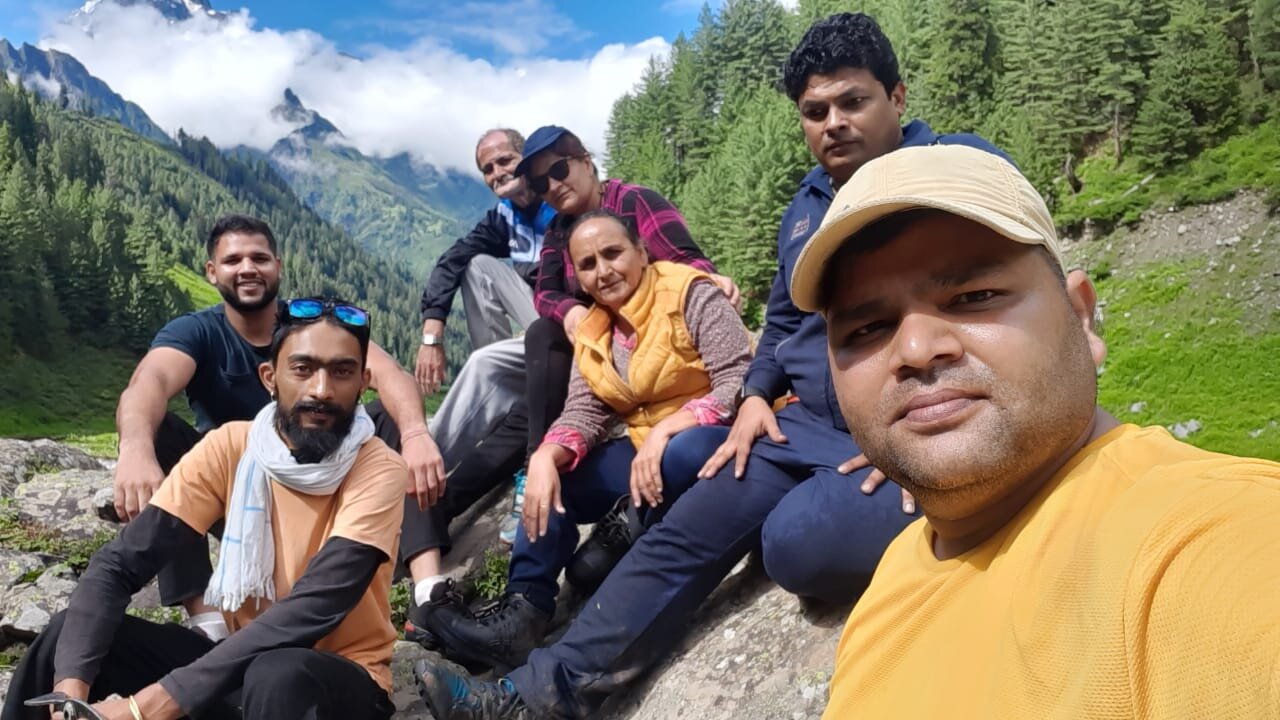
The Manimahesh Kailash Trek is best undertaken between the months of May and September when the weather is favorable and the route is accessible. It is important to avoid the monsoon season as heavy rainfall can make the trek challenging and dangerous.
Facilities and Accommodation
During the Manimahesh Yatra, various facilities and accommodations are available to ensure a comfortable experience for pilgrims. The state government, as well as voluntary organizations, set up tents and camps at different points along the trek. These facilities provide shelter, food, and medical assistance to pilgrims.
Toilets and restroom facilities are also provided at regular intervals to maintain cleanliness and hygiene. It is advisable to pack warm clothing, as the weather can be chilly at higher altitudes.
Conclusion: A Sacred Journey to Remember
The Manimahesh Kailash Trek is not only a physical journey but also a spiritual quest that leaves a lasting impression on the minds and souls of the pilgrims. The breathtaking beauty of the Manimahesh Lake, coupled with the reverence for Lord Shiva, creates an atmosphere of devotion and tranquility.
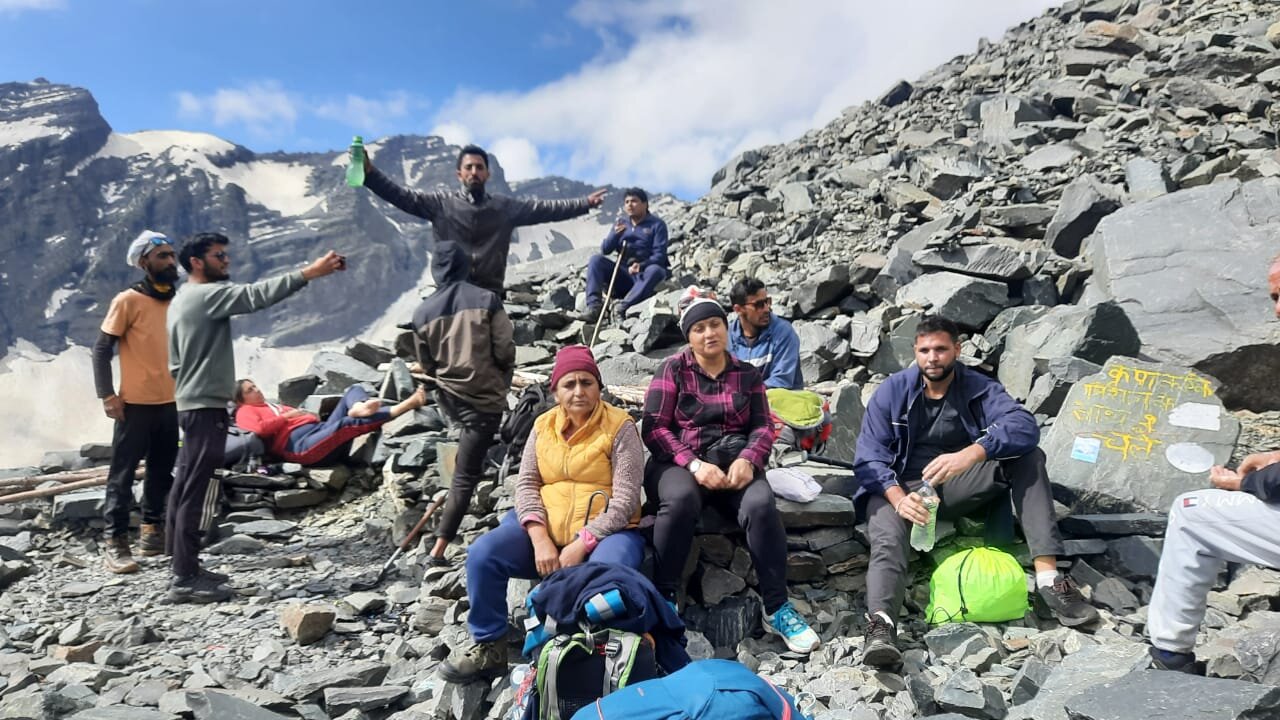
Whether you choose the traditional Bharmaur – Hadsar route or the adventurous Parikrama route via Kugti Village, the Manimahesh Yatra promises an unforgettable experience filled with natural splendor and spiritual enlightenment. Embark on this sacred pilgrimage and immerse yourself in the divine aura of the Manimahesh Kailash Peak, where Lord Shiva himself is believed to reside.
Additional Information:
The Manimahesh Yatra is a sacred pilgrimage that attracts thousands of devotees and trekkers each year. It is important to prepare adequately for the trek by consulting with a medical professional, ensuring physical fitness, and acclimatizing to the high altitude. It is also essential to pack essential items such as sturdy trekking shoes, warm clothing, sunscreen, and a first aid kit.
Related packages
Adi Kailash and OM Parvat Yatra from Delhi
Adi Kailash and Om Parvat Yatra Package
Shrikhand Mahadev Kailash Yatra Package
Mani Mahesh Trek Package
Plan your trip.
Manimahesh Kailash Yatra: A Spiritual Journey To Self
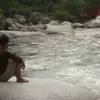
"It's the darkest hour before the dawn. Wrapped in almost half a dozen blankets, I am half-awake in my tent at Dhancho after trekking for six hours. Numerous thoughts keep flowing in my head as I listen to the burbling sound of Parvati stream running in the rearside of our camp. I try to calm my mind, not getting attached to any thought and letting them flow - just like the water of this river.
Soon to break the calm, there's a noise outside. I hear some people shouting with joy. I unzip my tent and rush out bare-feet to catch a sight of something glittering far there in the Kailasha Parvata. It's called Mani - the gem on Shiva's crown, they say. When the moon rays reflect from it on a clear, full moon night, it shines. It's a rare occasion on a land which is 13,500 feet above the sea level."
A bounty in the cloud dipped Pir Panjal Range of the Himalayas, Manimahesh Kailash Peak is still a mysterious and heavenly quest to the devotees of Lord Shiva across the country, who throng the place during an annual mela or piligrimage held from Krishna Janamashtmi to Radhashtmi.
The main religious site of Manimahesh Lake from where the virgin Kailash Peak (believed to be the abode of Lord Shiva) is sighted is located at a distance of 14 kilometres (8.7 miles) from the nearest road point of Hadsar . Being 13 kms far from Chamba , Hadsar is considered as the starting point of Manimahesh Yatra and can be reached via air, rail or road. However, the rest of the trek to the Manimahesh Lake is covered barefoot by the pilgrims.
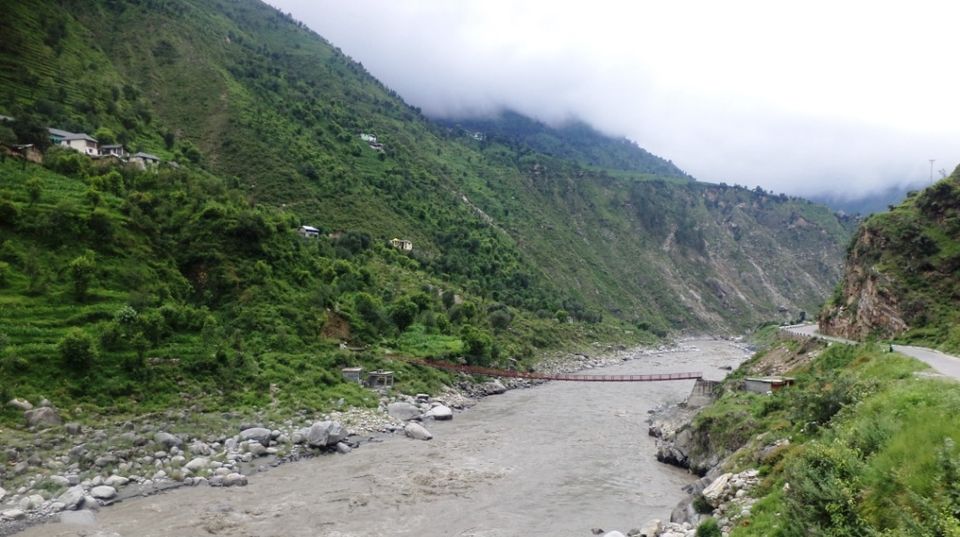
Religious belief:
According to a local legend, Manimahesh - as the name signifies, refers to a jewel (Mani) on Lord Shiva’s (Mahesh’s) crown, that imparts its holy darshans (sight) to the devotees when the moon rays reflect from it on a clear, full moon night, being a rare occasion. This is followed by another rare event when the first rays of sun fall on the peak of Kailash hill, which appears like saffron tilak when seen in the lake as its reflection. These events, adding more to the religious belief to the local people of Himachal, as well as various pilgrims visiting the place during the annual pilgrimage also contribute to the practice of taking bath in the Manimahesh lake, which also known as ‘Shiv-kund’ and ‘Dal-Jheel.’
After taking a dip in this beautiful, shallow circular lake, Kailash Peak is worshipped at a roofless temple, conspicuous with many iron trinkets, on the opposite side of the lake. The whole view in the morning touches the heart of the visitor, urging him to visit again next year.
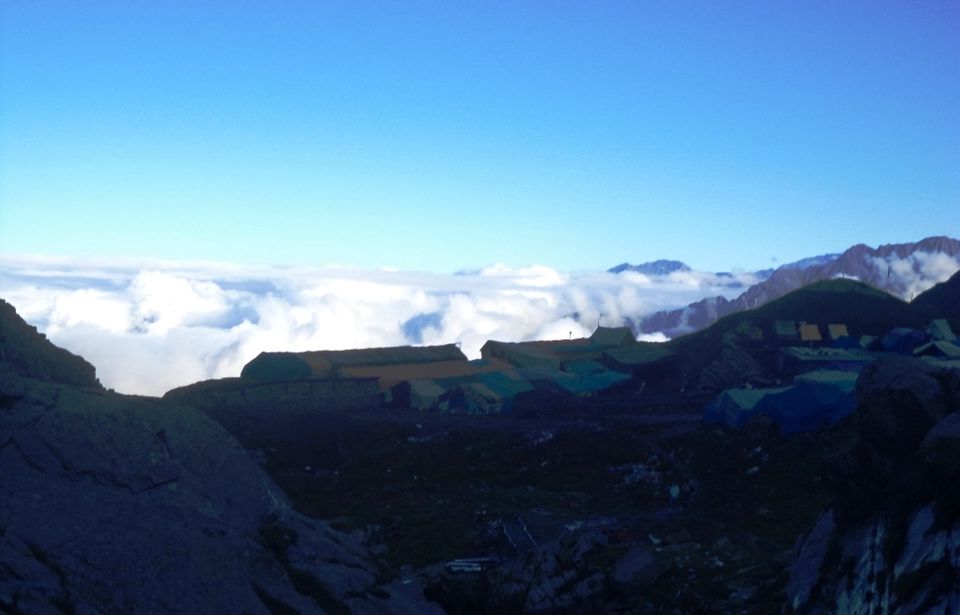
Providing a heavenly experience of the rain-drenched hills and beautiful huge waterfalls all through the way, this Kailash Yatra is also considered as one of the toughest pilgrimages in India .
The three-day yatra involves a road trip from Bharmour to Hadsar (17 kms, half an hour by road) on the first day. As per the religious belief, the yatra is started before taking a short trip of 4 kms from Bharmour to pay obeisance at Brahmani Mata Temple.
The Chaurasi Temple Complex also becomes a major hotspot for the tourists and devotees in Bharmour.
On the second day, yatris begin the ascending and descending trail of stone steps from Hadsar, through the thick forests to reach Dhanchho and ought to reach Gauri-Kund by evening or night where it is believed that Goddess Parvati used to bath and now, only women are allowed to take a dip in the pond. Tented accommodation and various dhabas and kitchens are also facilitated to the pilgrims by the state government, as well as various voluntary organizations at different spots on the main trek. However, Gauri-Kund is also a place to rest before proceeding towards the final destination of the pilgrimage.
Yatris finally trek to the Manimahesh Lake through an ascending zigzag path on the third day and intend to return the same day after the holy darshans. The path is hewn off the slope and meanders above many glacier peaks.
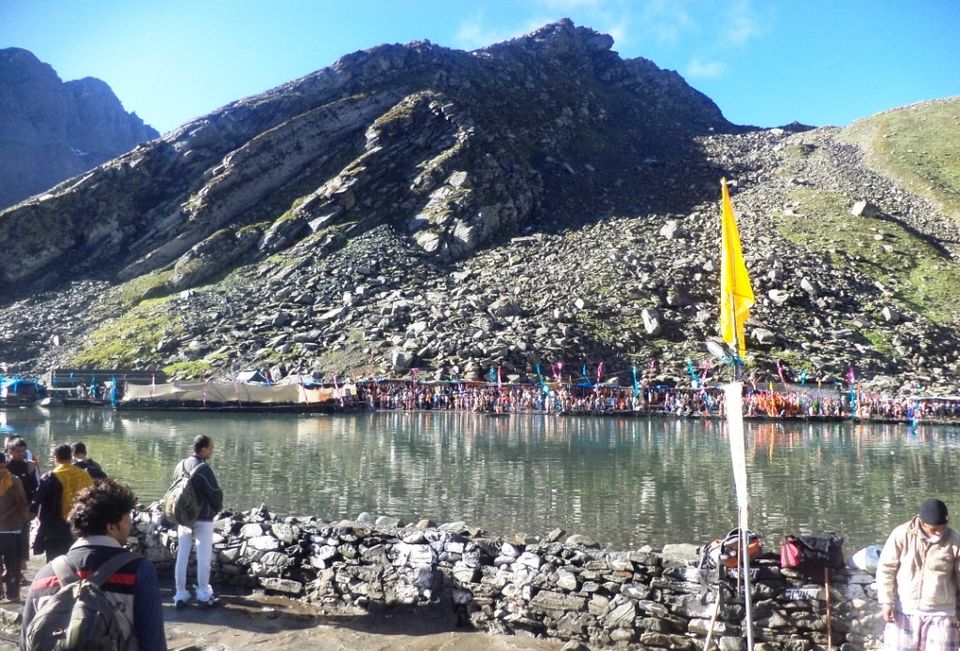
There are many legends associated with different places all through the pilgrimage. One being the famous among all says that Lord Shiva created Manimahesh after he married Goddess Parvati, who is worshipped as Mata Girja. This legend also mentions that Shiva performed penance on the banks of Manimahesh Lake. Along with Shiv-Kund and Gauri-Kund many devotees also consider it important to pay obeisance at many other holy lakes like Kamal-Kund, Kaali-Kund, and Ravan-Kund, etc.
Also, another legend says that when Lord Shiva went to Manimahesh Kailash, he granted a boon to goddess Brahmani Devi that the pilgrimage of devotes to Manimahesh Lake would not be acceptable to him if they do not pay obeisance at Brahmani Mata Temple and take a dip in their holy pool.
Special facts about the place:
Special Attributes: Brahmani Mata Temple, Chaurasi Temple Complex, and Manimahesh Lake.
Nuisance: Risky ascending and stony treks, unpredictable weather and rains.
Dressing: Carry woolens along as it gets terribly chill as you climb.
Connectivity: One can reach by public buses to Hadsar or could adopt the helicopter facility from Hadsar to Manimahesh Lake and vice-versa. Helicopter packages may cost around Rs.8000 for both up and down.
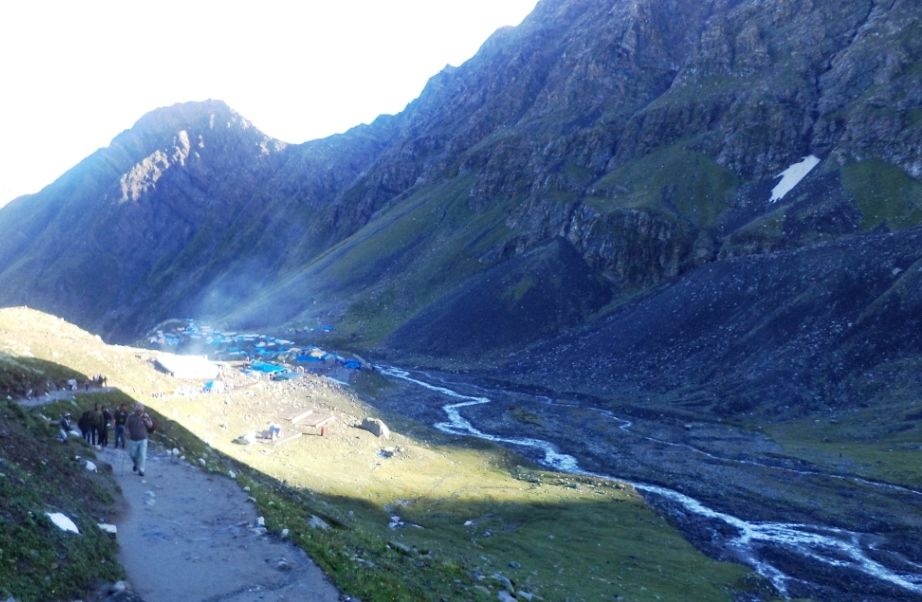
Exposure: Mostly outdoors.
Preferable season: Yatra is held once in a year, during the month of August/September.
Facilities: Bhandaras, kitchens, etc. smooth the progress of pilgrimage after every few kilometers at certain stops. Toilet booths are also set up like the same. Medical facilities are also provided.
Food Prohibition: Not such. Non-vegetarian food can also be availed from Hadsar and Bharmour.
Tip: The walks can be highly strenuous, so travel light. People with respiratory and other such disorders are suggested to consult their doctor before pilgrimage as many areas are oxygen challenging.
The travelogue was written after the trek in the year 2012.
Mani Mahesh Arora on Instagram - manimahesharora
Frequent searches leading to this page:-
manimahesh kailash yatra, manimahesh trek cost, mani mahesh yatra, manimahesh trek cost, manimahesh temple

- Mcleodganj Triund Trek
- Dharamshala Holiday Package
- Mcleodganj Bir Billing
- Bir Billing trip
- Kasol Kheerganga Tosh(KKT)
- Manali Holiday package
- Pangi valley Sach pass
- Dharamshala Pragpur Masroor
- Shimla Manali Kasol Tour
- Spiti Valley
- Leh Ladakh Tour
- Explore Zangskar
- Ladakh bike tour
- Golden Temple Tour
- Dharamshala Dalhouise Holiday Tour
- Sikkim Darjeeling Tour
- Kashmir Tour Package
- Sari Pass Trek
- Himachal tour
Adventure sports
- Paragliding
- Trout fishing
- Mountain biking
- Bird watching
- Bungee jumping
Mountain Climbing
- Moon peak Expedition
- Dhauladhar Matterhorn
- Friendship Peak -Burw
- Mount Ladakhi peak
- Stok Kangri Expedition
- Kanamo peak
Dharamshala
- Triund trek
- Snowline Laka Glacier
- Indrahar Pass
- Seven Lakes of Dhauladhar
- Minkiani pass trek
- Bhagpura trek
- Bir Billing Rajgundha trek
- Bhim Ghasutri Pass
- Bara Bhangal
- Talang pass
- Dhauladhar Circuit
- Baleni Pass
- Dehnasar lake
- Jalsu Pass trek
- Tatapani Hot Springs trek
- Shinghar pass trek
- Waru pass trek
Manali & Chamba
- Kheerganga Trek
- Hampta pass
- Friendship Peak
- Pin Bhabha Pass
- Pin parvati trek
- Malana Chanderkhani
- Sara Umga pass
- Deo Tibba Trek
- Bhuranghati Chandernahan lake trek
- Kalicho pass trek
- Manimahesh Kailash Peak
- Pangi Valley trek
- Kalindi Khal Trek
- Dyara Bugyal Trek
- Harki Dun Trek
Latest Treks
- Upcoming Treks
- Parang La Trek
- Miyar valley trek
- Trekking in ladakh
- Zanskar trek
- Trekking in Bhutan
- Sikkim Goeche la trek
- Kashmir great lakes
- Chadar Trek
- Kedarkantha trek
- Chobia Pass
- Dev Roopa Trek
- Blog Listing
- Blog Single
Uncovering The Spiritual Significance Of Manimahesh Kailash Trek
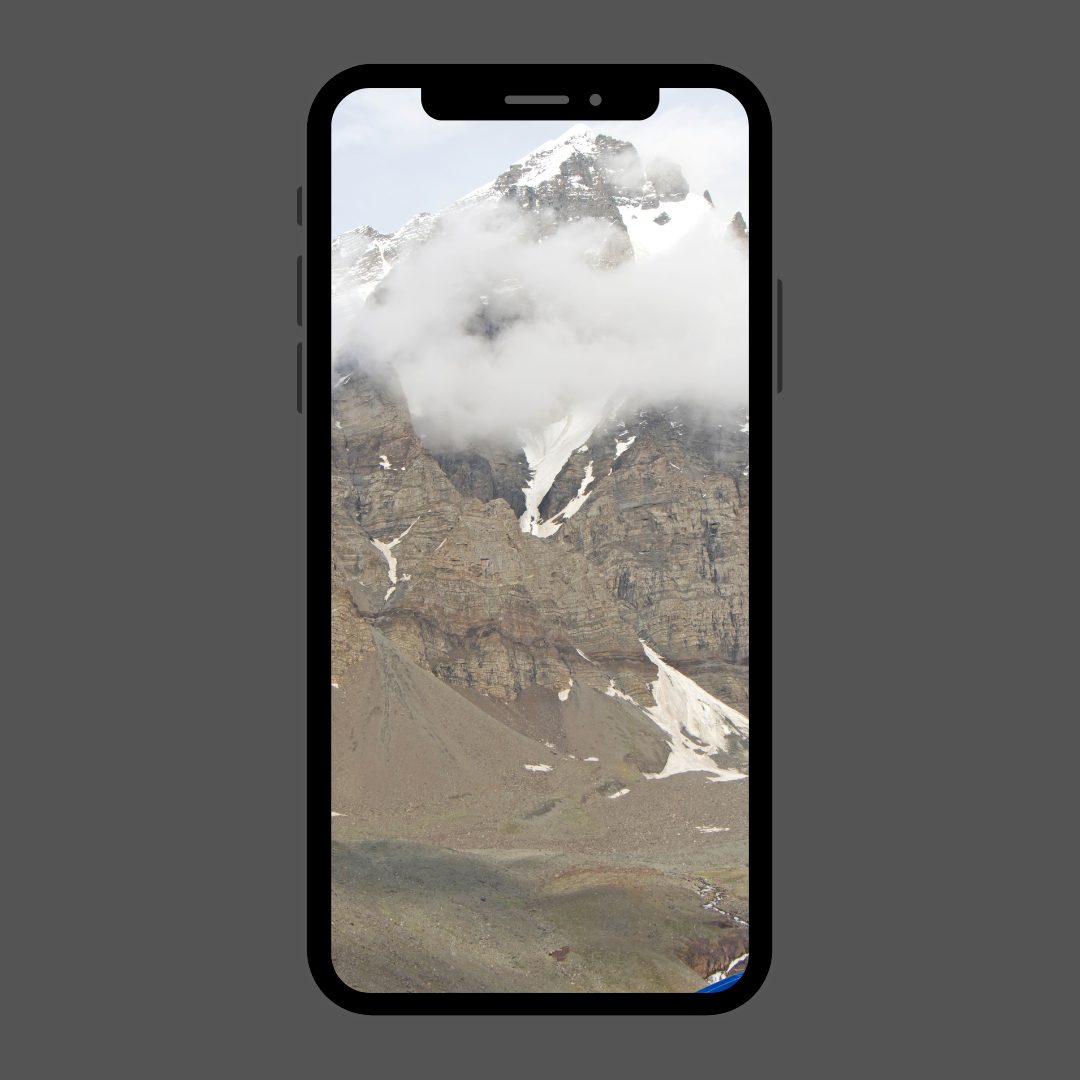
Are you ready for a spiritual adventure that will leave you in awe? Look no further than the Manimahesh Kailash Trek and Yatra. Located in the heart of the Indian Himalayas, this trek takes you to one of Hinduism’s most sacred sites – Mount Kailash, also known as Manimahesh. This journey is not just a physical challenge but also a mental and spiritual one. In this blog post, we’ll give you tips on how to prepare both physically and mentally for the trek, what to pack efficiently, and even offer discounts if you book with Tempest Treks. So get ready to uncover the spiritual significance of Manimahesh Kailash Trek!
Table of Contents
How To Prepare Physically And Mentally For Manimahesh Kailash Trek
Preparing physically and mentally for Manimahesh Kailash trek is crucial to have a successful journey. It’s important to start your physical training at least 3-4 months before the trek. This will give you enough time to build up your stamina and endurance levels.
Focus on building core strength through exercises such as squats, lunges, planks and push-ups. These exercises help in building overall body strength which is essential during the trek.
Mental preparation is equally important as physical preparation. The trek requires determination, patience and positivity throughout the journey. It’s recommended to practice meditation or yoga regularly before embarking on this spiritual journey.
It’s also advised that one should consume lots of water daily while preparing for the trip since proper hydration is key when undertaking any strenuous activity.
With regular exercise both physically and mentally along with proper diet plan will ensure an enjoyable and successful expedition in Manimahesh Kailash Trek!
Manimahesh Kailash Trek: What To Pack And How To Pack Efficiently
Packing efficiently for the Manimahesh Kailash trek is crucial to ensure a smooth and successful trip. The first thing to consider when packing is the weather conditions. As it can get cold at night, warm clothing such as jackets, gloves, hats and thermals are essential.
Comfortable and sturdy footwear is also important as there will be long walks on uneven terrain. A backpack with multiple compartments can help in organizing items properly and minimizing weight distribution.
It’s important not to forget basic necessities like sunscreen, insect repellent, toiletries and medication. Portable chargers or extra batteries for electronic devices are also recommended as charging points may not always be available.
Carrying snacks such as energy bars or nuts can provide quick bursts of energy during the hike without taking up too much space in your backpack.
By packing smartly and efficiently for the Manimahesh Kailash trek, you’ll have more comfort while hiking through beautiful landscapes that offer stunning views of mountain ranges – making this an unforgettable experience!
Book Manimahesh Kailash Trek With Tempest Treks And Get Huge Discount
If you’re planning to embark on the Manimahesh Kailash Trek , it’s essential to have a reliable and experienced trekking company by your side. Tempest Treks is one such company that can help make your trip safe, enjoyable, and memorable.
Booking with Tempest Treks means you’ll have access to their team of experienced guides who are familiar with the terrain and can ensure a smooth journey for you. They provide all necessary equipment and gear, including tents, sleeping bags, food supplies, etc., so you don’t have to worry about anything except enjoying the trek.
Moreover, booking with Tempest Treks offers several perks as well – they offer huge discounts on group bookings or early bird bookings. You can save up to 20% on your total cost by availing these discounts.
In addition to this, Tempest Treks also has an excellent safety record; they prioritize the safety of trekkers above everything else. Their guides are trained in first aid measures and carry medical kits along with them at all times.
So if you’re looking for a hassle-free experience while embarking on Manimahesh Kailash Trek without compromising with safety or comfort- book now with Tempest treks!
How To Prepare For Manimahesh Kailash Yatra: Tips And Tricks For A Successful Trip
With these tips and tricks, you are now fully equipped to embark on your Manimahesh Kailash Yatra . Remember to be physically and mentally prepared, pack efficiently, book with a reputable trekking company like Tempest Treks for discounts and an unforgettable experience. Allow yourself to fully embrace the spiritual significance of this trek by immersing yourself in the natural beauty around you and appreciating every moment of your journey. With proper preparation and an open heart, your Manimahesh Kailash Yatra is sure to be a success. So what are you waiting for? Start planning your adventure today!
Follow Us On Our Social Media Pages
Facebook , Instagram , Twitter
Previous Story
Exploring The Mystical Beauty Of Manimahesh Kailash Yatra
Manimahesh kailash parikrama: everything you need to know, leave a reply cancel reply.
Your email address will not be published. Required fields are marked *
Save my name, email, and website in this browser for the next time I comment.
Related Posts
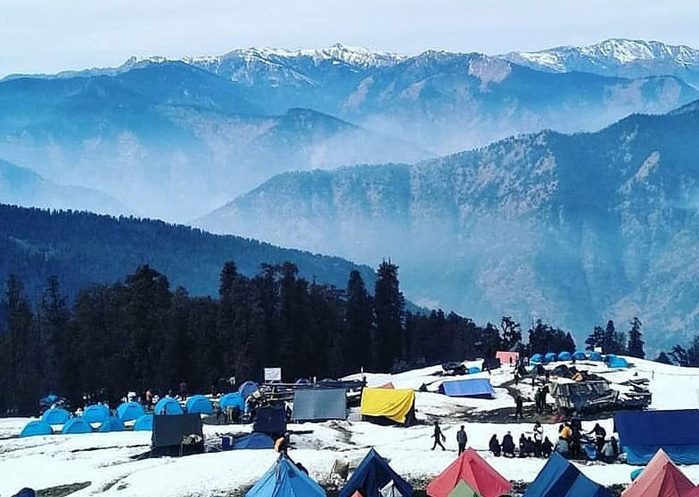
Kedarkantha Trek Package – Unforgettable Winter Wonderland
Embark on an extraordinary journey into a pristine winter wonderland with Tempest Treks’ Kedarkantha Trek Package. Nestled amidst the majestic Himalayas, Kedarkantha is a...
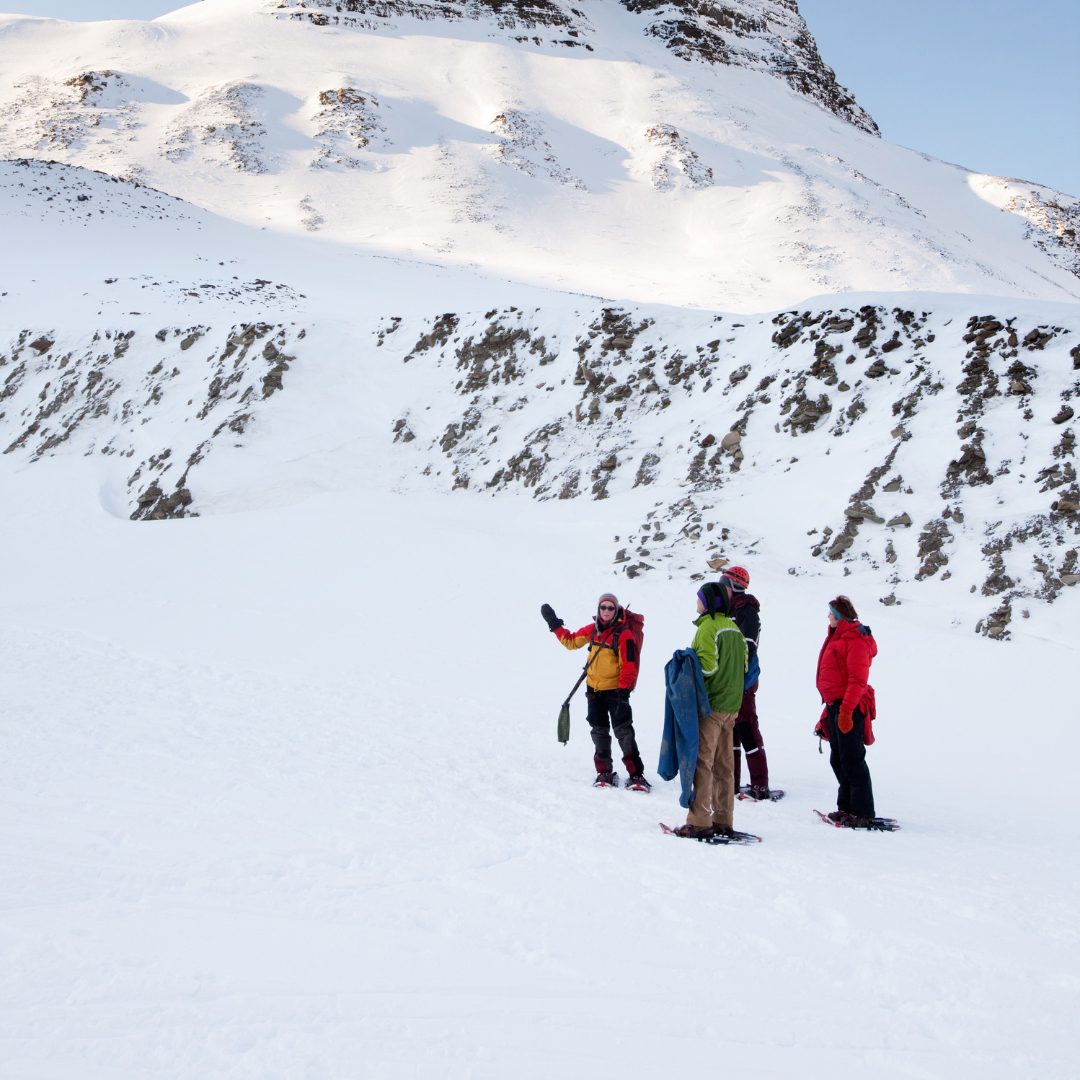
Unveiling the Thrill of Chadar Trek 2024: A Himalayan Adventure of a Lifetime
Introduction: Embarking on an exhilarating trekking expedition amidst the majestic Himalayas is a dream for many adventure enthusiasts. In 2024, one such extraordinary journey...
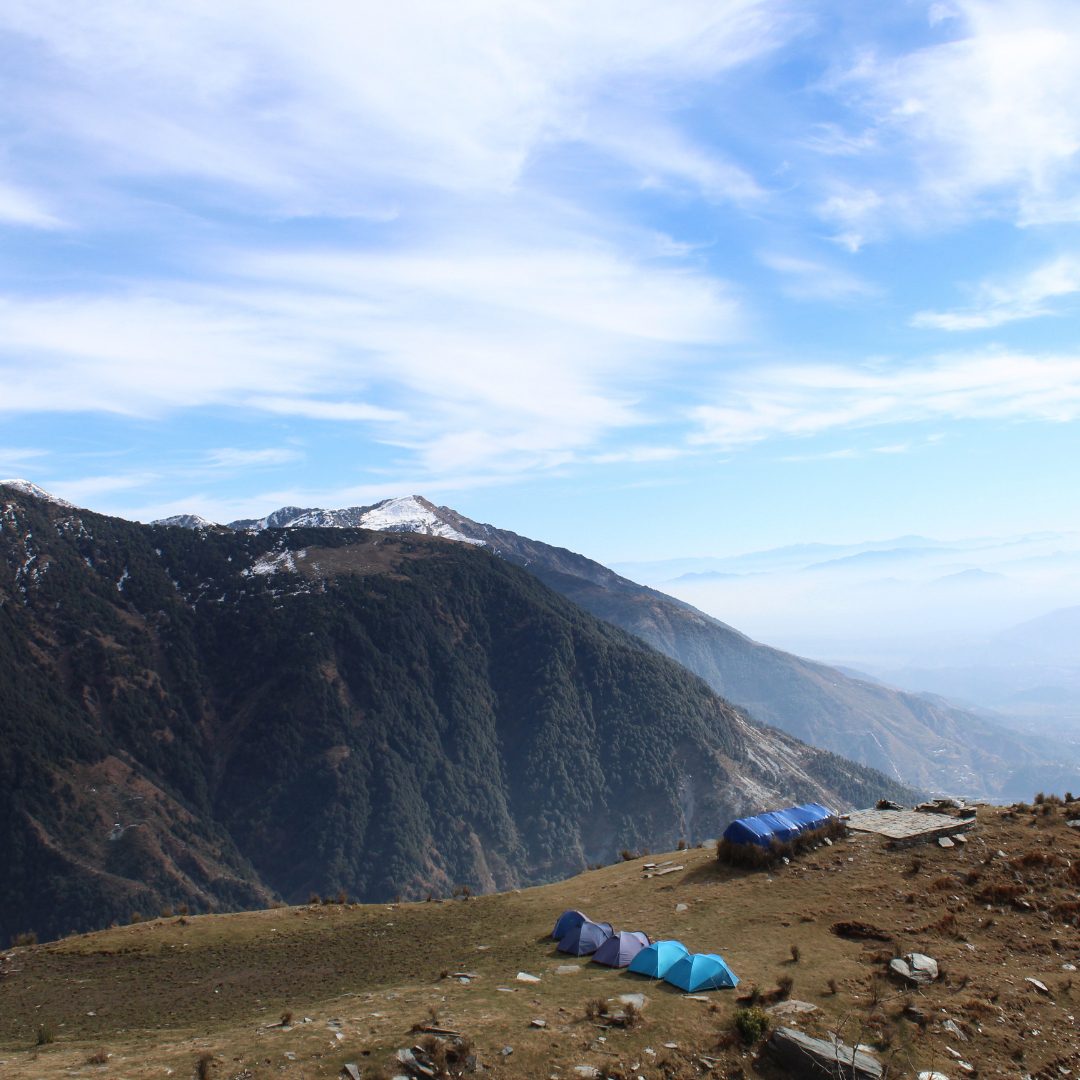
Your Ultimate Guide to Triund Trek Booking and Beyond: Exploring the Best Trekking Destinations in India
Introduction: Embarking on a trekking adventure is a thrilling way to connect with nature and explore the breathtaking landscapes of India. Among the myriad...
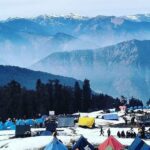
Kedarkantha Trek Package – Unforge...

Independent Trekking and Travel
Search form, manimahesh lake.

Base City:
Difficulty: , starting point: , ending point: , average duration: , route finding: , equipment required: , permits: , blog entries & image galleries: , trek overview.
This is a nice short pilgrimage trek which can be done without a tent during the pilgrim season (summer through september) I camped when I did it as it was late in the season and altready snowed over, but I was still able to stay with a friendly Sadhu by the lake. Its a pretty straight forward trek and since the path is used by millions of pilgrims finding your way shouldn't be a problem especially in season. Out of season can be more challenging because there are also some older paths that can be confusing and if things are covered in snow route finding tends to be more difficult in general, but in general still a pretty straight forward trek.
Scienic highlights include the spectacularly situated scared alpine lake that sits at the base of Manimahesh Kailash.
Cultrual highlights the pilgrims, sadhus, shrines, and offerines that are spread along the way to and shores of this sacred Hindu lake, and mountain.
Other Treks in the Region
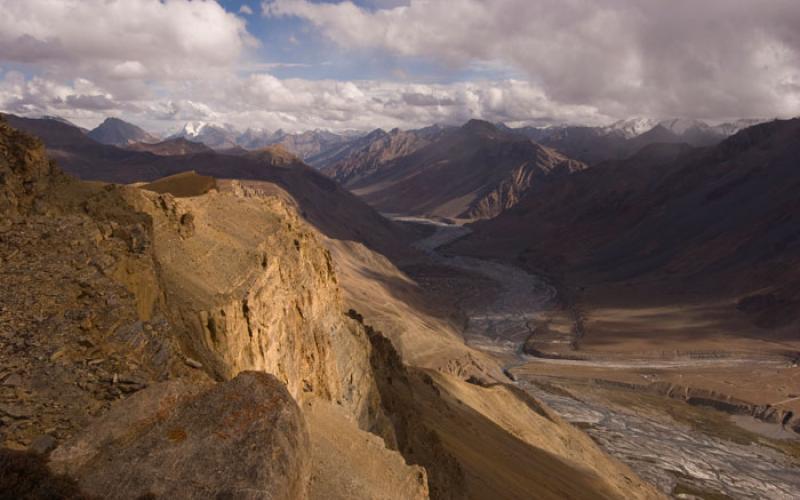
Add comment
More information about text formats
Filtered HTML
- Web page addresses and e-mail addresses turn into links automatically.
- Allowed HTML tags: <a> <em> <strong> <cite> <blockquote> <code> <ul> <ol> <li> <dl> <dt> <dd>
- Lines and paragraphs break automatically.
- No HTML tags allowed.
Guidebooks & Maps
Find A Trek
Recommended.

More From Micah's Travels
MI Photo Blog (2007-2013) MI Travel Journal (2007-2011)
Purchase Images
Images C opyright © 2013 Micah Hanson Contact to License Images
More Images by Micah Hanson

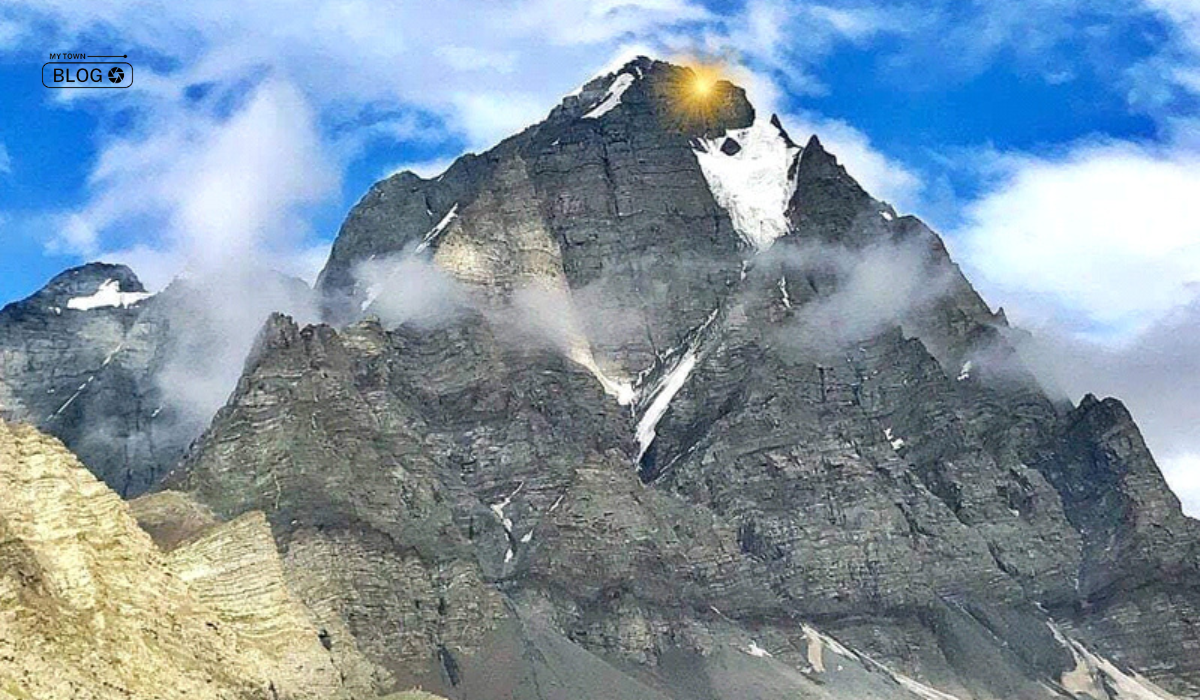
Manimahesh Kailash: History, Lake, How To Reach, and Tracking Tips
Home » Blog » Manimahesh Kailash: History, Lake, How To Reach, and Tracking Tips
Some Hindu devotees journey to Himachal Pradesh annually to participate in the well-known Manimahesh Kailash Yatra. Janmashtami marks the beginning of this three-day holy journey, which continues on Radhashtami. The trek covers 13 kilometers. The destination is the serene Manimahesh Lake nestled in the Bharmour area of Chamba district.
Legend has it that Lord Shiva manifests in the form of “Mani” in Manimahesh, located approximately 85 kilometers from Chamba city. Encircled by the majestic Dhauladhar, Pangi, and Zanskar mountain ranges, this sacred peak is referred to as Manimahesh-Kailash. People of faith have been making this thrilling travel for thousands of years, believing Chamba to be the residence of Lord Shiva, hence the name “Shivbhoomi.”
History and legend surround the Manimahesh Yatra’s beginnings, with stories of Lord Shiva making multiple heavenly visits to his followers in this area. At 13,500 feet above sea level, the natural lake helps the place’s magical atmosphere, which is thought to be evidence of a higher force.
The lake’s water level suddenly rises on the lucky day of Ashtami, even before the traditional bath commences, which is one of the pilgrimage’s unique events. The event confuses researchers, who have been unable to find the reason for it. The reason behind this unexpected spike in water levels is still unknown, as is the resulting decline in water levels during Ashtami.
For those making the journey, the holy Manimahesh Lake has even more meaning because it is believed that Lord Shiva personally executed meditation there.
Visit The Historic Brahmani Devi Mandir Before The Journey:
Without making a trip to the Brahmani Devi Temple, the Manimahesh Kailash Yatra seems incomplete. This temple, which is only 4 kilometers from Bharmour, is very important to travelers. It is traditional for visitors to take a bath at the blessed pool next to the temple before starting the yatra. It is thought that this procedure is necessary for the trip journey to be fully completed.
Starting On A Faith-Based Journey:
Hindu texts describe Mount Kailash as Manimahesh-Kailash. It is bound by the Himalayan mountains of Dhauladhar, Pangi, and Zanskar. A lot of travelers come here to honor Mount Kailash after bathing in the holy waters of Manimahesh Lake during festivals that include Sri Krishna Janmashtami (Bhadrapada Krishna Ashtami) to Sri Radhastami (Bhadrapada Shukla Ashtami). There is lots of adventure on the route to Manimahesh Lake, which passes through mountains, valleys, and rivers. People say that the Manimahesh Yatra has similarities to the Amarnath Yatra. People who are unable to make the trek to Amarnath sometimes go to Manimahesh Lake to take an important bath.
Nowadays, reaching Manimahesh Lake has become more accessible with helicopter services available from Bharmour to Gaurikund during the yatra. For trekking enthusiasts, tents are set up for accommodation around Hadsar, Dhancho, Sundarasi, Gaurikund, and Manimahesh.
Legend has it that Lord Shiva and Mother Parvati used to play here, which is why people call this location “Shiva’s Chaugan”. Those who participate in the Manimahesh Yatra usually explore the religious lake three times after taking a dip in it and paying respect to the four-faced stone image of Lord Shiva nearby. Residents believe that the Manimahesh Kailash mountain shields them from calamities, leading them to venerate this massive mountain.
To ensure the convenience of devotees during the Manimahesh Yatra, residents (referred to as Gaddis) traditionally ascend the mountains with their sheep before the yatra begins. They clear the path leading to Manimahesh Lake. According to traditions, Lord Shiva and Mother Parvati used to have fun here, which is why people call this place “Shiva’s Chaugan”. Following a dip in the famous lake and a visit to the next-door four-faced stonework of Lord Shiva, travelers in the Manimahesh Yatra frequently spend three days visiting the site.
Navigating To Manimahesh Lake:
Manimahesh Lake can be reached by travelers and hikers via a variety of paths. Kugti Pass is usually used by hikers traveling from Lahaul and Spiti to get to Manimahesh. Travelers from Kangra and Mandi often opt for the route via Kavarsi or Jalsu Pass. Another common route is through Chamba and Bharmour, which provides relatively easy access to Manimahesh.
Passengers traveling via Bharmour can take a bus to Hadsar. From Hadsar, pilgrims and trekkers need to continue their journey to Manimahesh on foot. Along the way from Hadsar to Manimahesh lies Dhancho, where most travelers choose to rest for the night. If time permits during the Manimahesh Yatra, visitors can also explore a beautiful waterfall located near Dhancho.
En route to Manimahesh Lake, travelers encounter two significant religious water bodies named Gauri Kund and Shiv Krotri, situated about one kilometer before reaching the lake. According to mythological beliefs, Lord Shiva and Mother Parvati alternately bathed in these two reservoirs. Female pilgrims typically begin their journey by bathing in Gauri Kund, while male pilgrims start at Shiv Krotri reservoir.
Alternatively, travelers can reach Manimahesh Lake by trekking. The first route passes through Hadsar and Dhancho, offering various facilities for travelers and devotees. Due to its accessibility and availability of amenities, travelers often prefer this route.
The second route, preferred by many trekkers and adventure seekers, passes through Holi Village. However, facilities are scarce along this route until reaching Manimahesh. Despite this, travelers are rewarded with stunning views of Manimahesh Lake from higher vantage points while taking this route.
Spectacular Sight Of Sapphire:
The Himachal Government has bestowed upon this mountain the name “Turquoise Mountain,” also known as Vaiduryamani or Neelmani. When the sun rises behind Mount Kailash in Manimahesh, the entire sky takes on a blue hue, and the rays appear in shades of blue. Believers attribute properties akin to sapphire to Mount Kailash, causing the collision of sunlight to create this mesmerizing blue spectacle.
Interesting Information About The Manimahesh Kailash Peak:
There is a belief that no one has successfully climbed the peak of Manimahesh Kailash so far. Legend has it that decades ago, a Gaddi attempted to ascend the mountain with a group of sheep but met with failure and eventually turned into stone along with the sheep. There are also tales of a snake attempting the climb, only to suffer a similar fate of turning into stone. These stories contribute to the mystique surrounding the unconquered peak of Manimahesh Kailash.
Lord Shiva desired to keep the peak visible only to himself.
Past unsuccessful attempts have marked hiking to the Manimahesh Kailash peak. It’s speculated that by navigating the N Ridge and E Wing up to the Nanoni Valley and descending to Kugti Village, it might be feasible to ascend and descend the peak within 3 days. People consider the condition of the peak at such mountainous heights challenging.
The Manimahesh Kailash peak abruptly descends into the lake nestled in the mountain’s lap. Believers hold that it symbolizes Lord Shiva seated on the throne atop the Manimahesh Kailash peak, with the natural light resembling the gem worn around the neck of Sheshnag.
Legend has it that the height of this mountain remains unmeasured to this day. While climbing this Kailash peak isn’t considered difficult, none of those who ventured up ever returned. Local lore suggests that despite the conquest of Mount Everest, scaling the Manimahesh Kailash peak isn’t as straightforward. There’s a tale of a Gaddi who attempted the climb, vowing to sacrifice a sheep or goat at each step of the way but turned into stone before reaching the summit. The sheep accompanying him suffered the same fate, and it is said that some of these stone formations still exist in the area.
Ideal Time To Explore Manimahesh:
Tourists and pilgrims can visit Manimahesh any time from April to November. However, from December to March, heavy snowfall blankets the area, including the lake itself. These harsh winter conditions make visiting during this time not recommended. The months of June to October witness a large influx of devotees who come to visit Manimahesh Lake, drawn by its spiritual significance and serene beauty.
Suggestions For Exploring Manimahesh Lake:
It’s a great experience to travel while attending the Manimahesh Fair, but be careful—there are a lot of fanatics around. If you intend to visit Manimahesh outside of the fair, make sure you bring food, drinks, and comfortable clothing because there are not many food and drink options available in part of the fair.
Be sure your exploring equipment is in working order before starting the Manimahesh trip. It’s best not to walk alone during the off-season or when there is a lot of snowfall because these conditions might make trekking difficult. Follow the trekking requirements and always go in the company of other experienced hikers or guides.
When starting your trip, ensure that you fully charge all your electrical equipment, including smartphones, stabilization devices, photographic equipment, drones, and other gadgets. Higher altitudes might not have access to charging stations. An amazing opportunity to view the Milky Way at night is provided by Manimahesh, which makes camping at night a perfect choice.
Keep in mind that there can be issues with coverage for mobile networks at Manimahesh, so consider carrying a satellite phone if you can to ensure you can stay in contact.

Manimahesh Trek:
Day 1: hiking to the 2,280-meter dhancho.
We’ll eat an early breakfast today and then begin our walk. We’ll check out and drive to Hadsar, which marks the end of the road access. We’ll start our 7-kilometer climb to Dhancho from there. We’ll have a well-earned lunch when we get to Dhancho in the middle of the day, and the rest of the evening is ours to relax. We’ll spend the night camping at Dhancho.
Day 2: Travel 14 km on foot to reach Manimahesh Lake
We’ll go out on a 14-kilometer hike to the majestic Manimahesh Lake, which hides away at 4,080 meters, after breakfast. We’ll enjoy an informal lunch and take in the lake’s peaceful beauty. Later in the day, we will climb back to the Dhancho base camp and set up camp there.
Day 3: Return to Bharmour and Chamba
In the morning, we’ll trek back 14 km to Hadsar. From there, we’ll drive back to Chamba via Bharmour, concluding our memorable journey.
Hotels in Bharmour:
Hotel bharmour view.
In Brāhmaur, Hotel Bharmour View provides lodging with room service and a front desk open around the clock. Free WiFi is available to visitors everywhere on the location. There’s also a restaurant on site that serves real Indian food, and there are free private parking spots for visitors.
Hotel Bharmour View in Brāhmaur offers accommodations with restaurant service and a 24-hour front desk. All around the site, guests can access free WiFi. Additionally, there’s a restaurant on the property that offers traditional Indian food, and free private parking is available for visitors.
Bharmour villa
Bharmour Villa, set away in the Himachal Pradesh region’s Brāhmaur, offers a haven of peace surrounded by lush gardens. Guests can explore the areas surrounding the hotel by hiring a car or by taking advantage of the free private parking offered.
The property offers private bathrooms in each room, and for more privacy, several of the rooms even have rooftops facing the garden.
The suitable for families restaurant at the villa offers delicious American food and is open for dinner, lunch, and brunch.
Moreover, guests can partake in rejuvenating yoga classes offered on-site and unwind by the outdoor fireplace at the villa complex for a truly tranquil experience.
Hotel Mahadev Bharmour
Hotel Mahadev Bharmour provides accommodation in Brāhmaur, offering a comfortable stay for guests. This three-star hotel has free WiFi throughout and functional features like room delivery and a front desk that is open around the clock. During their visit, guests can enjoy incredible vistas of the hills.
For ease of storage, a closet is provided in every hotel room. To further ensure a comfortable and restful stay, guests may take advantage of a flat-screen TV, private bathroom facilities, and a balcony with enticing city views.
The Northern Country Homestay
The North Village House, which is located in Bajoli in the Himachal Pradesh location, has a beautiful atmosphere and a terrace with amazing panoramic mountain views. Free private parking, free WiFi, and an outdoor area are available for guests to enjoy at the hotel.
Over guests can enjoy a flat-screen TV and bed linens and towels provided by the homestay.
The Hidden Crest
The Hidden Crest in Chhatrari has guestrooms with a warm terrace and breathtaking views of the mountains. Every apartment includes a balcony with breathtaking views for visitors. In addition, it features multiple features including an electric hair conditioner and shower in a private bathroom and a television with a flat screen.
For extra ease, guests may request bedding and towels for an additional fee.
Guests can choose from a wonderful vegetarian meal or a full English/Irish breakfast at the guesthouse. In addition, visitors can benefit from the common lounge space and the adjacent hiking and bicycle routes.
Concerning Manimahesh Trek (FAQs):
What is the kailash hike in manimahesh.
Hindu pilgrims drive the Manimahesh Kailash Yatra, a well-known devotional journey, to reach Manimahesh Lake after a 13-kilometer trek in Himachal Pradesh.
What time is the journey happening?
Usually in August or September, the journey starts on Janmashtami and ends on Radhashtami.
How can one reach Manimahesh Lake?
Pilgrims can trek from Hadsar or access Bharmour by road.
What facilities are available along the trekking route?
Campsites like Dhancho offer accommodation and food, with helicopter services also available during the yatra season.
Is trekking to Manimahesh Lake possible in winter?
High snowfall from December to March makes it advisable to avoid.
Before going on walks, one must take safety measures.
To protect your safety, double-check your climbing equipment, bring warm clothing, and hike with friends or guides.
What landmarks are along the trekking route?
Pilgrims encounter the Brahmani Devi Temple, Gauri Kund, and Shiv Krotri, significant sites on the pilgrimage journey.
Also Read: Kinner Kailash Trek: History, Trek Permit, Tracking Tips, And How To Reach
Sapna Verma

Recent Posts
Hadimba devi temple: history, festival, how to reach, and best time to visit, gurudwara sahib manikaran: history, hot spring, how to reach and best time to visit, bijli mahadev temple: history, architecture, and best time to visit.
- Finding the Secrets of Prashar Lake: A Peaceful Treasure in the Mountains
- Shikari Devi Temple: History, How To Reach & About Pandava’s
Recent Comments
Trending now.
- 10 Best Boutiques In Chandigarh In 2023 June 3, 2023
- Top 10 Best Instant Soup Brand June 7, 2023
- Dining with a View: Discover the Best Rooftop Restaurants in Indore September 25, 2023
Recently Posted

Previous Post Mount Kailash: History, Scientifically Reasons, Lakes, How To Reach
Next post stock market crash: a deep dive into the numbers, recommended for you.

Leave a Reply Cancel Reply
Save my name, email, and website in this browser for the next time I comment.
© 2024 MyTownBlog.
- Hot & Trending
- World Heritage
- International
- Entrepreneur
- Coaching Centre
Username or E-Mail
Forget Password?
Do not have an account?
Already a member.

- Benog Tibba Trek
- Bhadraj Forest and Temple
- Pari Tibba Trek
- Chhaskhet Nature Walk
- George Everest Nature Walk
- Mussoorie Walking Tour
- Mussoorie Heritage Walk – Landour Cantt
- Mussoorie Heritage Walk – Old Landour Bazaar
- Mussoorie Heritage Walk – Kulri & Camel`s Back
- Day Treks Near Mussoorie
- Day Trips from Mussoorie
- Jogini Waterfall Trek
- Shimla Day Hikes
- Nag Tibba Trek
- Chandrashila Trek
- Chopta Tungnath Chandrashila Trek
- Deoria Tal Chandrashila Trek
- Hatu Peak Trek
- Dalhousie Trek
- Triund Trek
- Kheerganga Trek
Kasol to Grahan Village trek
- Kedarkantha Trek
- Har Ki Dun Trek
- Valley Of Flowers Trek
- Bali Pass Trek
- Dodital Trek
- Ruinsara Tal Trek
Sar Pass Trek
Buran ghati trek.
- Hampta Pass Trek
- Gulabi Kantha Trek
- Panwali Kantha Trek
- Roopkund Trek
- Gangotri Gaumukh Tapovan Trek
- Gaumukh Tapovan Nandanvan Trek
- Yamunotri Saptarishi Kund Trek
- Nanda Devi Sanctuary Trek
- Bir Billing Trek
- Beas Kund Trek
- Bhrigu Lake Trek
- Jalori Pass Trek
- Janjehli Shikari Devi Trek
Manimahesh Lake Trek
- Sangla Valley Trek
- Triund Indrahar Pass Trek
- Rupi Bhabha Wildlife Sanctuary Trek
- Kedarnath Yatra Package
- Char Dham Yatra Package
- Valley Of Flowers Trek Package
- Sar Pass Trek Package
- Kashmir Great Lakes Trek Package
- Srinagar Tour Package
- Kedarkantha Trek Package
- Nag Tibba Trek Package
- Chopta Chandrashila Trek Package
- Brahmatal Trek Package
- Dayara Bugyal Trek Package
- Kareri Lake Trek Package
- Kuari Pass Trek Package
- Kasol Kheerganga Trek Package
- TrailHikers Mountain Camps in Mussoorie
- Chauki Dhaulas Bike Trail
- Majhaun Bike Trail
- Purkal Rajpur Bike Trail
- George Everest Bike Trail
- Chhaskhet Bike Trail
- Mountain Quail Bike Trail
- Mountain Bike Tours
- Sainji Corn Village Tour
- Nag Tibba Village Stay In Uttarakhand
- Village Stays in India
- Best Treks Near Dehradun
- Day Hikes Near Mussoorie
- What To Expect On Nag Tibba Trek
- Best Things About Nag Tibba Trek
- Nag Tibba Trek Blog
Proceed Booking
Already a member.
Username or E-mail
Don't have an account? Create one.
Or continue as guest, adding item to wishlist requires an account, why book with us.
- Hassle free booking experience
- 24/7 Customer support
- Hand-picked tours & activities
- Trek insurance support
TrailHikers® | India's Premium Trekking & Adventure Tour Agency
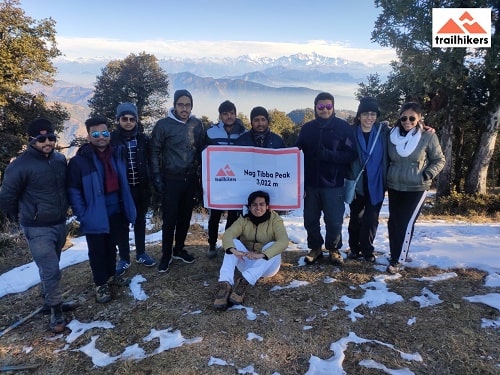
- 700+ Adventure tours
- Certified & experienced adventure team
- Premium trekking & camping services
- Highest safety standards with rescue & medical backup
Get A Call / WhatsApp
Our team will reach out to you on Call / WhatsApp within 12 hours !
- 12-15 persons
- Camping based trek
- Easy-Moderate
- Min Age: 10+
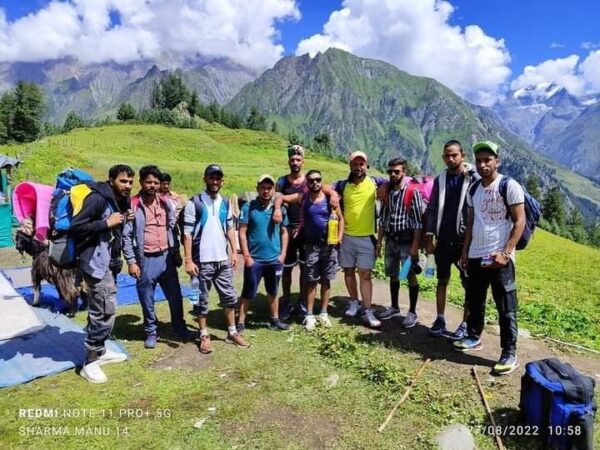
- Starts ₹11,500/- 4 Nights 5 Days Ex Bharmour
✔ all veg meals (Day 1 dinner to Day 5 breakfast) ✔ hotel / lodge accommodation for 4 nights (triple sharing) ✔ trek / yatra permits ✔ services of trek guides / trek leaders & support staff ✔ first aid & safety kit (with oxygen cylinder)
- Upcoming Dates Sept >> 8, 14, 18, 24 (Open)
Interested ? Lets plan your trip !
- Get Price Quote on WhatsApp +91-7895990850
Manimahesh Lake Trek 04 Nights 05 Days, Himachal Pradesh, India
The sacred lake of Manimahesh (4,115m), reflecting the image of the Manimahesh Kailash towering above, draws the faithfuls by the tens of thousands at the time of the annual pilgrimage. My first trip in September 1997 was two days after 80,000 people had thronged the area _leaving the route strewn with disposable cups and plates, fruit peel and soft drink bottles, while the northern end of the lake was choked with polythene bags and plastic waste. But volunteers were already at work to clear the rubbish and I was told that they always do a satisfactory job. Since then, I have been to the lake 21 times and experienced its magic in different seasons. Early in summer, snow still blankets the paths above Dhancho. But the clear blue sparkling water of the half-frozen lake is a special sight, and worth the weary trudge through the snow. There is the additional possibility of sighting the monal pheasant at this time.
Manimahesh Lake, at the base of Mount Chamba Kailash (5,775m), is said to be the abode of Lord Shiva. Traditionally, pilgrims used to start from the Lakshminarayan Temple at Chamba (996m) and covered the 87-km route in seven stages, on foot. Now, most take a bus or taxi ride up to Hadsar. You can stay overnight at Bharmour (65 km from Chamba) and taxi up to Hadsar the next morning to start your trek. Ideally, the trek should be done in three days. At the time of Manimahesh Yatra (August/September, stretching over two weeks from Janamashtmi) many people do the entire stretch of 26 km in a single day, but this is extremely taxing, and we don’t suggest you try it.
The easiest time to trek is a couple of weeks before the yatra. During the yatra, the 7th century Chaurasi Temple complex in Bharmour offers the opportunity of witnessing gaddi rituals, but the crowds can be overpowering. During the yatra, tented accommodation is available at Dhancho, Jumaru, Sundrasi, Gauri Kund, Goth and the lake. Several dhabas and free langars also come up at these places. Rates are reasonable with food priced at Rs 25 per meal and a night stay at Rs 50 per person. The Mountaineering Institute Sub Centre, Bharmour (Tel: 01895-225036), also provides tented accommodation at Rs 50 per person (with sleeping bags and ground sheets).
Manimahesh Trek Highlights
- Walking through the majestic alpine
- Camping in the meadows having tasty & nutritious meals
- Capture the magnificent views of the Himalayan ranges
- Experience the thrill of crossing the high Himalayan passes
- Adventurous hike to Dhancho waterfalls, Gauri Kund and Manimahesh lake
Starting Point
Village Hadsar (30 mins drive from Bharmour)
Nearest Roadhead
Village Hadsar
Nearest Railhead
Chandigarh Railway Station
Nearest Airport
Bhuntar airport near Mandi
Price Inclusions
- all veg snacks & meals during trek
- camping equipment (tents, mats, sleeping bags etc.)
- camp tent / lodge accommodation for 4 nights (triple sharing)
- forest camping & trek permits (INDIANS ONLY)
- services of trek leaders, trek guides, cook, helpers
Price Exclusions
- any kind of personal expense on food or medicines
- any kind of travel, lodging or medical cost incurred in case a trekker decides to drop out of the trek
- any kind of hotel or lodge stay
- porter charges apply in case a trekker is unable to carry his / her backpack & wants to offload it on mule / porter (₹ 500-600 per backpack per day)
- any thing which is not mentioned in the inclusions
Itinerary BHARMOUR-HADSAR-DHANCHO-GAURI KUND-MANIMAHESH LAKE-GAURI KUND-HADSAR-BHARMOUR
Day 1 arrive at pathankot or bharmour drive to bharmour, day 2 bharmour-hadsar-dhancho distance 6 km time 2-3 hours level easy.
Drive to Hadsar (13 km 30 mins) from Bharmour, the town nearest to it. Bharmour itself is a picturesque town, with snowcapped Himalayas and alpine meadows around it. Hadsar is a very small village on the banks of the river Budhil, surrounded by high Himalayan mountains. A well-marked track starts from the eastern end of Hadsar Bazaar (2,100m). The concrete path turns right (south), just short of the tourist sarai managed by the PWD, and continues south along Gauri (Manimahesh) Nallah flowing down from Manimahesh. After about a kilometre (at Goi Nallah), it turns westwards and climbs sharply to Dibri, a water point. It gains height thereafter and reaches Tos ka Goth, a small resting place under fir (tos) trees.
A couple of small ascents and descents follow before reaching Dunali. Here, the path turns left to cross the Gauri Nallah over temporary wooden bridges, after which a steep climb to the right leads to Dhancho (2,900m). Where the tree line ends at Dhancho, there is a sloping pasture marked by rocks and big boulders at the lower end. Check out the huge Dhancho Waterfalls at the Gauri Nallah. Camp at the tented sarai or pitch your own tents.
DAY 3 DHANCHO-GAURI KUND-MANIMAHESH LAKE DISTANCE 8 KM TIME 4-6 HOURS LEVEL MODERATE
There are three options to reach Gauri Kund (3,600m) from Dhancho I recommend Option 1, as this is the most frequented route, and better maintained than others.
The main path to the lake goes past a pre-fabricated structure and dhabas that spring up at Dhancho in summer, before it turns right to cross Gauri Nallah over a wooden bridge, and then climbs steeply on the left bank of Gauri Nallah. Going past the top of the waterfall, the path turns left (north) after about a kilometre and crosses another wooden bridge over the Gauri Nallah. Thereafter, it ascends gradually along the right bank of the nallah. En route, two spots with some open space named Jamaru and Sundrasi, acquire temporary dhabas during the yatra. Sundrasi also has a medical post.
A kilometre after the dhabas at Sundrasi, the track forks. The route on the left moves west and follows a long switchback east before crossing two avalanche cones to reach Gauri Kund. This is the most taxing and tiring stretch of the day’s walk as the barren, tree-less landscape and thin air makes the climb difficult. A water bottle is a prized possession.
TIP Warning ! Watch out for loose stones falling from above at a couple of places on this stretch.
Gauri Kund, a pond in a glacial depression, is the place where women are expected to take a dip on their way to Manimahesh. After Gauri Kund, the track crosses Gauri Nallah to the left bank over a narrow wooden bridge turns right and climbs up through an open pasture called Goth (3,700m) to Manimahesh Lake (45-60 mins). Manimahesh Peak is visible on the left (see page 170). The lake has a small roofless temple on its southern side.
One can camp by the side of the lake, or at the sarais and prefabricated structures that are set up at Goth and Gauri Kund. The structure at Goth is dismantled by the end of the month of October. There is sufficient space to pitch tents on both sides of Gauri Nallah.
A new track was laid from Dhancho to Gauri Kund in 2002. It takes off from the main path described above, before Gauri Nallah is crossed below Jamaru. It goes straight to Gauri Kund, climbing up on the left side of Gauri Nallah. The ascent on this path is gradual but there is no drinking water available. So do not forget to include sufficient amount of water in your backpack.
This is the oldest route (through Bandar Ghati) that climbs on the right bank of Gauri Nallah. Earlier it was so tough that, at certain points, it required crawling on all fours. But now the trekking route has been improved considerably. It turns left (north) from the sadhu-sarai at Dhancho, climbs at a very steep grade in a series of short switchbacks before taking a right turn (east) to traverse a rock face. It goes on to meet the main trek (Option 1) below Jamaru.
DAY 4 GAURI KUND-HADSAR DISTANCE 13 KM TIME 4-6 HOURS LEVEL EASY
The return journey of 13 km can be done in a day within four to six hours on the same route. Try to reach Hadsar Village by late afternoon as taxis or buses do not ply in the evening. Or stay overnight at Dhancho and head to Hadsar Village the following day.
DAY 5 HADSAR-BHARMOUR-PATHANKOT DRIVE BACK TO BHARMOUR / PATHANKOT
Getting there & out.
FROM BHARMOUR to Hadsar (13 km/ 30 mins) charges ₹250, shared taxi and ₹15. Bus service is frequent Chamba to Bharmour (65 km/ 4 1/2 hrs) Taxi costs ₹1,500 and bus ₹50. Buses run regularly 8 am to 5 pm.
RETURN Take the same route back Hadsar to Chamba via Bharmour. The last bus leaves Hadsar at 5 pm.
Is it necessary to hire a guide on this trek ?
Yes, it is absolutely essential to take a guide for this trek whether you are trekking solo or in a group.
What is the best season for this trek ?
The best season for Manimahesh Lake trek is from Oct to Dec and March to June.
Is this trek suitable for kids ?
It is ideally recommended for 10+ age kids.
Is this trail safe for women & solo travelers ?
Yes, in fact all the Himalayan trails quite safe for women & solo travelers. People of the region are very warm, caring & hospitable in nature.
What type of accommodation is available during this trek ?
Camping tent accommodation (2-3 per tent).
Do we have to give tip money to guides / porters ?
Guides & porters in the region will never demand any tip money from you. They just need their daily wages paid by the trek operator. However, it is always encouraging if one can give a little tip to them if they provide good services.
Which currency is accepted during transit or in nearby villages on this trek ?
Indian currency is accepted
Related Tours
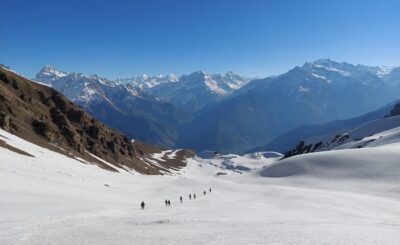
A spiritual & heart touching experience to the Manimahesh lake trek. Very happy with the trek guides, accommodation & all the services provided by the TrailHikers team. A memorable trip !
Manimahesh Yatra - Duration, Trek and Other Details
Top hotel collections.

Significance of Manimahesh Yatra
Trek to manimahesh lake.

Manimahesh Yatra Route
1. bharmaur - hadsar route.
- This journey starts at Bharmaur village when the pilgrims take a dip in the holy pond of the Bharmani Temple called the Bharmani Temple Kund.
- From Bharmaur, you can take a local bus to reach Hadsar village.
- The trek to Manimahesh Lake starts at Hadsar. On the way to the lake, you will find several resting points, eateries, camps and tents where you can halt your journey and stop for a rest.
- However, ideally, the next main stop is in Dhancho village. The trek from Hadsar to Dhancho is only 5 - 6 km and can be covered in 3 - 4 hours. On the way, you will also find several Bhandaras or Langars that will offer you free food.
- From Dhancho, the extreme left route leads up to the second last stop that is Gauri Kund. This route is known as Shiv Gharat. Aside from the beautiful scenery, you can also hear the wind against the mountains which is believed to sound like a melody of drums. This route leads to Gauri Kund which is supposed to be the bathing place of Goddess Parvati. While men are forbidden to even go near the pond, it is considered holy for women to take a dip in the pond.
- From Gauri Kund, Manimahesh Lake is only at a distance of 1 km. From the lake, you can spot the mighty Manimahesh peak in the distance. Pilgrims tend to take a dip in the chilling waters of the lake to seek Lord Shiva’s blessings.

2. Parikrama Route - Via Kugti Village
- This trek route also starts at Bharmour after taking a dip in the Bharmani Temple Kund and then reaching Hadsar.
- However, after reaching Hadsar, the next stop is not Dhancho but you will need to walk ahead to Dharol or Kugti Village. For reaching here, you can either hike or hire a vehicle. The total journey till Kugti will take around 3 - 4 hours through hiking.
- The actual trek starts from Kugti. Through a route of beautiful river streams and dense forest, you will reach Dhalotu. It is recommended to take a guide along with you.
- Next stop is Alyas where you can set up your tent and stay for the night. If you are trekking at the time of the Yatra, you will find tents setup beforehand by the locals. Alyas can be recognised by a huge saffron coloured rock known as Hanuman Garhi or Hanuman Shila.
- From Alyas, you can head off to Jotnu Pass. It is recommended to start this trek early in the morning (preferably at 7:00 AM) so you can reach your destination while the weather is still pleasant and clear. As the day passes, it might start snowing on the pass.
- Jotnu Pass is the last stop. From here, you can see the Manimahesh lake and you will take hardly 2 hours to reach your destination. On the way, you will also come across Dham Ghodi and Kamal Kund.
3. Yatra by Helicopter
Rituals of the manimahesh yatra, legend of manimahesh lake.

How to Reach
This post was published by Aqsa Aleem
Share this post on social media Facebook Twitter
Chamba Travel Packages
Compare quotes from upto 3 travel agents for free
5 Night 6 Days Dalhousie, Dharamshala, Chamba Holiday Package
Chamba tour package with manimahesh trek, relaxing retreat to dalhousie & dharamshala, dharamshala dalhousie honeymoon package with chamba sightseeing, exciting manali and dalhousie package with chamba day trip, charms of chamba, dalhousie, khajjiar & more, top hotels in chamba.
₹ 2,406 onwards
₹ 1,800 onwards
₹ 719 onwards
₹ 1,040 onwards
Related Articles

All You Need To Know About Kugti Pass Trek
Comments on this post
Browse package collections, nearby destinations for packages.
Dharamshala
Browse Hotel Collections
By hotel type.
Resorts In Chamba
Camping In Chamba
Homestays In Chamba
Top Places in Chamba

Get the best offers on Travel Packages
Compare package quotes from top travel agents
- India (+91)
*Final prices will be shared by our partner agents based on your requirements.
Log in to your account
Welcome to holidify.
Forget Password?
Share this page
- +91-9736871426
- [email protected]
- Bhagsu, Dharamsala, H.P
- (₹) INR ($) USD (€) EUR (£) GBP
- Day Hikes and Treks
- Fixed Departure Treks
- Himachal Tour Packages
- Sacred Lake Treks
- Refunds & Cancellation
Exchange Rates
Weather report, trek to manimahesh lake.
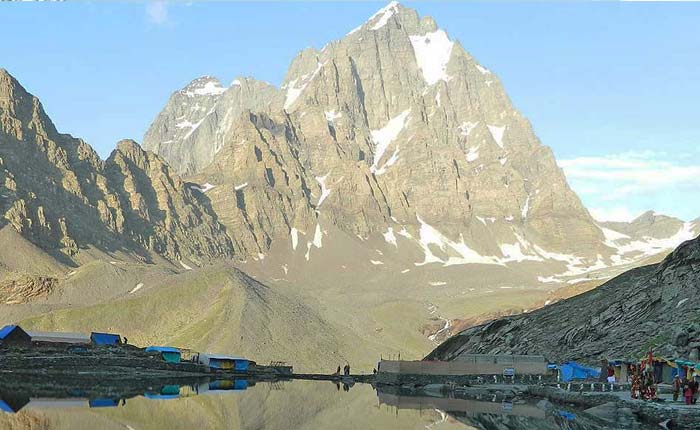
Manimahesh Lake (also known as Dal Lake, Manimahesh), situated in the Pir Panjal Range of the Himalayas, is a high altitude lake (el. 4080 m.). The Manimahesh Kailash peak stands high close to the lake. The religious sanctity of this place is next to the Lake Manasarovar.
- Trip Type Sacred Lake Treks
- Activities Camping , Nature Sightseeing , Pilgrimage Tour , Trekking
- Group Size No size limit - 10 Max
- Reviews 0 Reviews
- Locations Dharamsala Treks
- Trip Duration 10 Day(s) 9 Night(s)
- Trip Outline
- Trip Includes
- Trip Excludes
The Manimahesh Lake is situated Twenty-six kilometers from Bharmour in the Budhil valley , one of the chief pilgrimage spots in Himachal Pradesh. The lake is situated at an altitude of 13,000 feet at the foot of the Kailash peak (18,564 ft). Every year, on the eighth day of the light half of the moon in the month of Bhadon, a fair is held at this lake, which attracts thousands of pilgrims who assemble here to take a dip in the holy water.
Lord Shiva is the presiding deity of this fair / jatra. He is believed to reside in Kailash. A rock formation in the shape of a Shivling on Kailash is considered to be the manifestation of Lord Shiva. The snowfield at the base of the mountain is called Shiva’s Chaugan by the local people.
Mount Kailash is considered as invincible. No one has so far been able to scale this peak despite the fact that much taller peaks, including Mount Everest have been conquered many times. One story goes that once a Gaddi tried to climb the mountain alongwith his herd of sheep. He is believed to have been turned stone alongwith his sheep. The series of minor peaks below the principal peak are believed to be the remains of the ill-fated shepherd and his flock.
There is yet another legend according to which a snake also attempted to climb this peak but failed and was turned into stone. It is also believed that the devotees can have a view of the Kailash peak only if the Lord is pleased. Bad weather, when the peak is hidden behind clouds, is a sign of the Lord’s displeasure.
At one corner of the Manimahesh lake is a marble image of Shiva which is worshipped by the pilgrims who visit this place. After bathing in the holy waters, the pilgrims go around the circumference of the lake three times. The lake and its surroundings present a majestic view. The quiet waters of the lake carry the reflection of snow capped peaks that carry over the valley.
Manimahesh is approached from different routes. Pilgrims from Lahaul-Spiti come through Kugti pass. Some from Kangra and Mandi come via Kawarsi or Jalsu passes. The easiest route is from Chamba and runs through Bharmaur. At present buses ply upto Hadsar via Bharmour. Beyond Hadsar, the pilgrims have to trek for 13 kms to reach Manimahesh.Between Hadsar and Manimahesh is an important halting place known as Dhanchho where pilgrims usually spend a night. There is a beautiful waterfall.
About one and half kilometers short of Manimahesh lake fall two religiously important water bodies called Gauri Kund and Shiva Krotri where as per popular belief Gauri and Shiva bathe respectively. The women pilgrims do take holy dip in Gauri Kund and the men pilgrims in Shiva Krotri before proceeding to Manimahesh lake.
Itineraries
Time : 8:30 am, day 01: mcleodganj – kareri village (1900m)…13km.
The first 6km of the trek passes through a small lake. Tibetan children village and satobary village. From satobary village a wide trail descends to Ghera through thick jungle the cross Gaj river and Karari stream. From Ghera is a steady climb to Kareri village. Night stay in tents.
Day 02 : Kareri village – Kareri Lake (3200m)…12km
Trek goes along Kareri nullah. It is 3 to 4 hours to Kareri Lake. The lake is situated at the base og Minkiani Pass. Kareri lake has beautiful high altitude meadows and big pastureland.
Day 03: Kareri Lake – Minkiani Pass-Minkiani Got (3500m)….10km
Four to five hours steed asent takes to the top of the pass. In early summer one has to walk over snow and ice and needs good technical skill. After the monsoon there is no snow and the trail is visible. The weather is unpredictable here. From the Pass the trail descends down to the Minkaiani Got through big boulders.In early summer months these boulders remain covered by deep snow. The track terminates at Minkaini Got where few rock caves and a beautiful camping ground will take care of night stay.
Day 04 : Minkiani Got – Lam Dal Lake (3900m) – Minkiani got….11km
Lam Dal the biggest lake in Dhauladhar range is considered as the abode of Shiva and is sacred. On the way to Lam Dal is kali Kund shaped like a well and surrounded by rising hills.
Day 05 : Minkiani Got – Drakund (1800m)…..15km
From Lam Dal the trek descends down the valley along Lam Dal stream Night stey at Drakund.
Day 06 : Drakund – Dunali ….9km – Bharmour (2195m)…..45km
It takes about two hours to reach Dunali on the main Chamba – Bhamour road. The villages are scattered but linked with each other.
Day 07 : Rest day in Bharmour
Located at the confluence of Ravi and Lam dal stream. (Dunali to Bharmour – 40 km) Night stay in a guest house inj Bharmour visit ancient Chaurasi Temples Re-supply for the trek.
Day 08 : Bharmour – Hadsar – Dhancho (2440m)
Bharmour to Hadsar is 13Km motorable. Hadsar to Dhancho is about 7km steep ascent. Dhancho is the base camp for the trekkers enroute Manimahesh Lake. Gauri nullah (stream) forms a huge waterfall at Dhancho. Night stay in the tents.
Day 09 : Dhancho – Manimahesh lake (4115m) – Dhancho
From Dhancho a big trail steep up 5km to Gauri kund is gradual ascent for 2.5km to Manimahesh Lake. Manimahesh is a small glaciar lake in Dhauladhar and Pir Panjal ranges. Thousands of people go on pilgrimage to this lake every year in August. Lunch at the lake and to Dhancho for the night stay.
Day 10 : Dhancho – Bharmour
Night stay in the guest house From Bharmour bus/ jeep are available for Chamba, Dharamsala, Pathankot.
No details found.
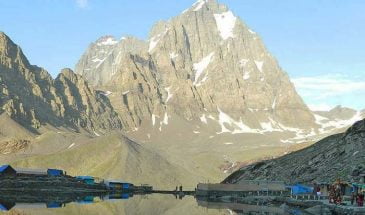
No Details Found
Related Trips
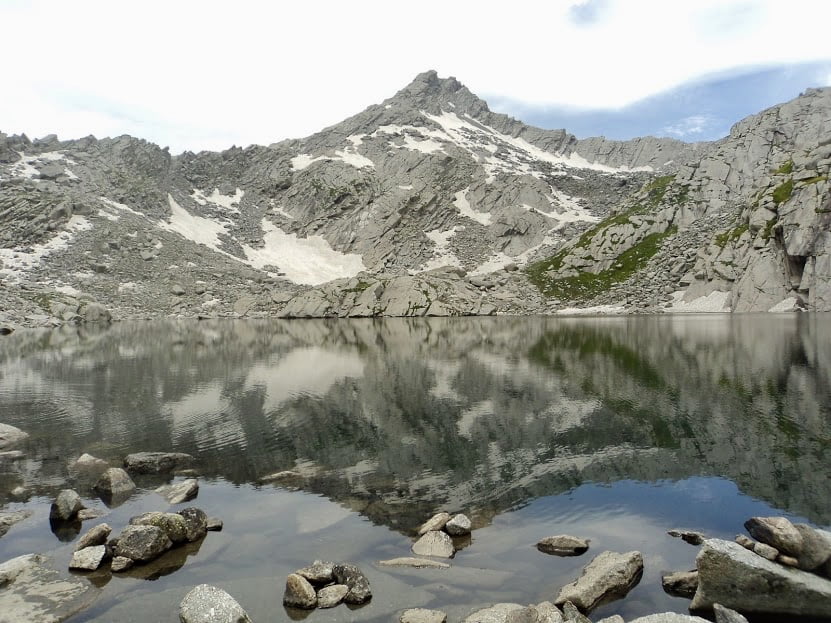
Nag dal Lake Trek (8 Nights 9 Days)

Minkiani Pass Trek
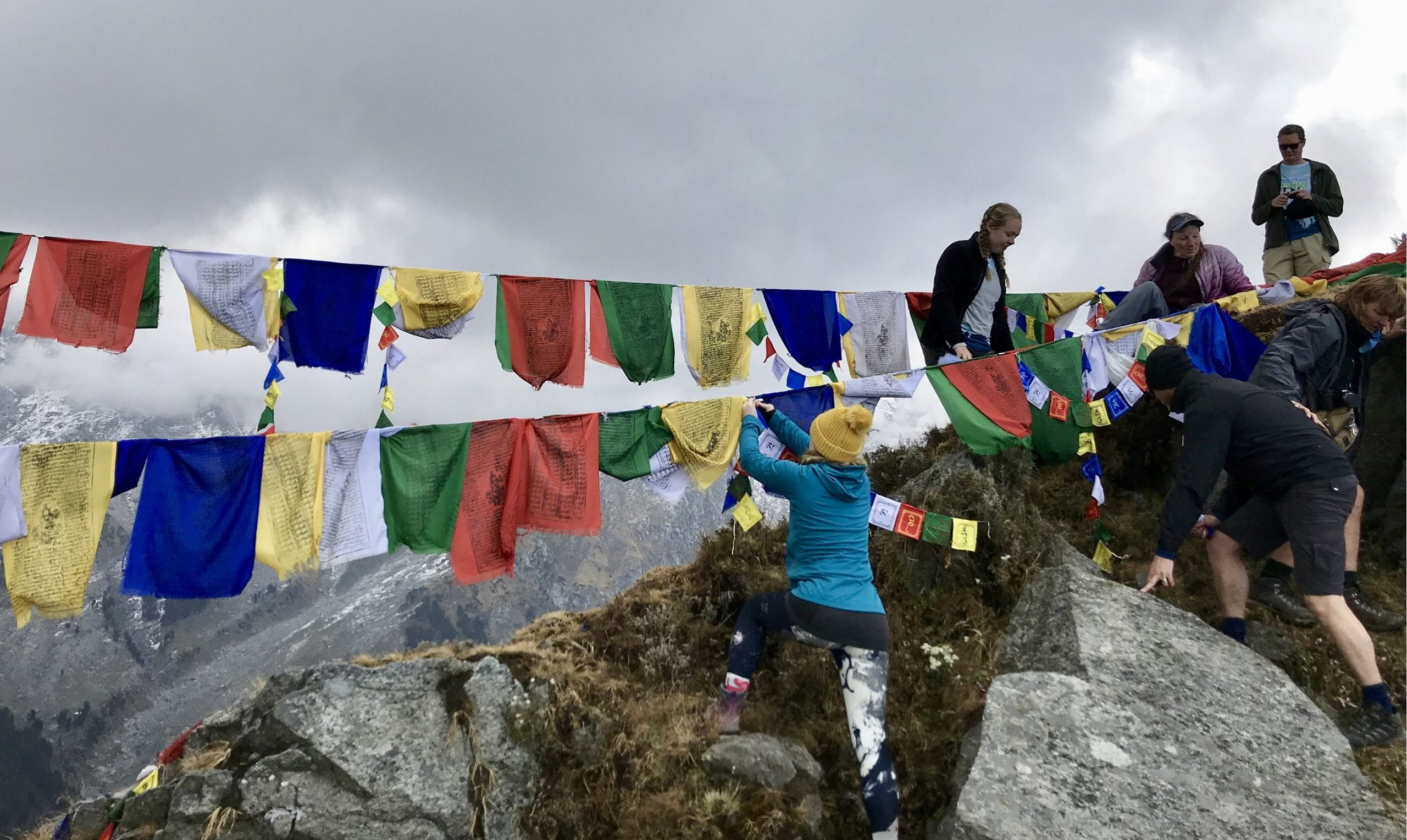
Dalai Lama Himalayan Trek

- Treks in Himachal Pradesh
- Treks in Uttarakhand
- Treks in Sikkim
- Treks In Jammu & Kashmir
- Uttarakhand
- Himachal Pradesh

Manimahesh Trek Guide 2024: History, Highlights, Best Time, How to Reach & Itinerary
Table of Contents
Manimahesh trek is one of the most delightful trips in Himachal Pradesh. Mani Mahesh Yatra is a heavenly spot for Hindus. This place is also called Dal Lake, Manimahesh is a high-height lake rise of 4,080 meters 13,390 ft situated near the Manimahesh Kailash peak in the Pir Panjal valley of the Himalayas, in the Chamba region of Himachal Pradesh.
The significance of this lake is close to that of Lake Manasarovar in Tibet. The lake is the venue of a profoundly respected trek undertaken during August/September relating to the period of Bhadon as per the Hindu schedule, on the eighth day of the New Moon time frame. It is known as the ‘Manimahesh Yatra’.
The lake is situated close to the Manimahesh Kailash Peak in the range ( Pir Panjal Range) of the Himalayas at an elevation of 4080 meters. The Dal lake is situated in Bharmour subdivision of Chamba district of Himachal.
History of Manimahesh Trek
According to legends, it is believed that after the wedding with Goddess Parvati who is also known as Mata Girija, lord Shiva made Manimahesh Peak. There is one more story that legends says that when lord Shiva went to Manimahesh Kailash, he gives a boon to goddess Brahmani Devi that the journey of devotees to Manimahesh Lake Trek wouldn’t be acceptable to him until and unless they don’t pay deference at Brahmani Mata temple and take a dip in sacred pool.
Keypoints of Manimahesh Trek
Highlights of manimahesh trek.
- Take blessings of lord Shiva at Manimahesh Lake.
- Camp under the stars, on the lakeside of Manimahesh, amid the delightful mountains.
- A rare occasion of the first sun’s beams falling on the Mani Mahesh top is found in the appearance of the lake-like saffron Tilak.
- View the lofty mountains and valleys while journeying.
- Enjoy the dazzling views of Pir Panjal peak.
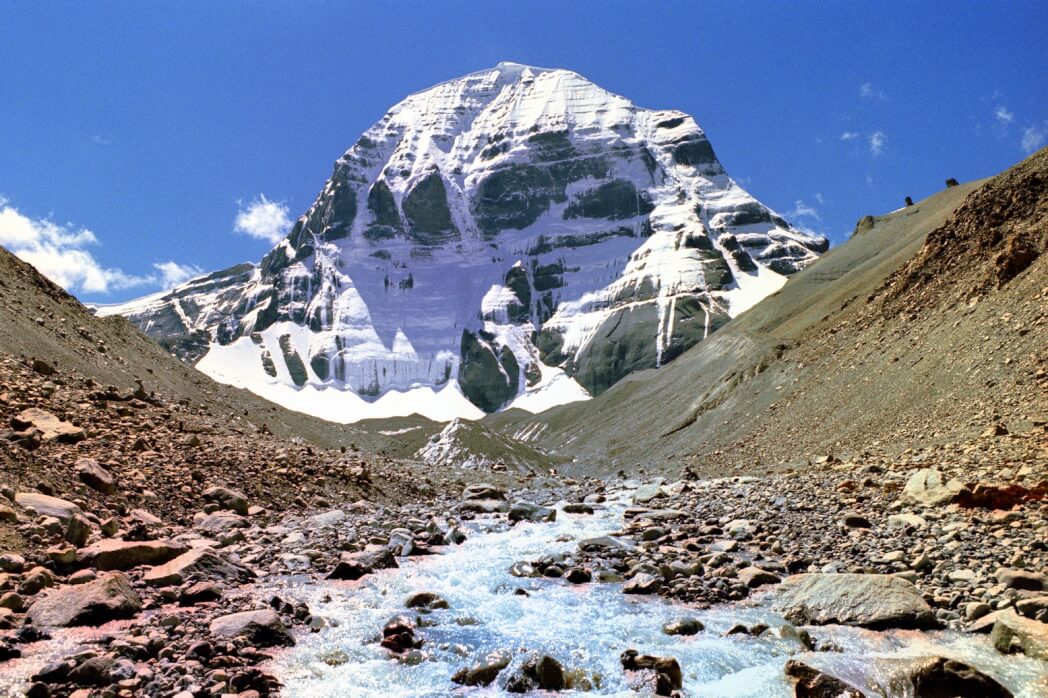
Location of Manimahesh Trek
The Manimahesh Lake is situated, 26 kilometers from Bharmour in the Budhil valley, one of the main trek spots in Himachal Pradesh. The lake is arranged at a height of 13,000 feet at the foot of the Kailash top (18,564 ft).
Best Time To Visit Manimahesh Lake
The best time to visit Manimahesh for traveling would be from the period of April to September. The pilgrimage trek is usually started from Janamashtami (August) to Radha Ashtami (September).
How to Reach Manimahesh Lake?
Closest Railway Station is Pathankot Cantt railway station which was known as Chakki bank before (Punjab).
Closest air terminal is at Gaggal in Kangra which is 230 km away from Bharmour however, Jammu and Amritsar Air terminals are also doable to reach this place.
Manimahesh is easily accessible by buses and cars to Bharmour and afterward by nearby cabs to Hadsar except for the last 13 km which can be covered on foot.
Itinerary of Manimahesh Trek
Day 01: delhi-dharamshala.
Reach Pathankot promptly in the morning of the day and from here drives to Dharamshala. On arrival check-in into the hotel to freshen up and afterward explore the nearby destinations of Dharamshala.
Day 02: Dharamshala – Hardsar – Dancho
In the morning after breakfast, drive up to Hardsar and afterward further trip to Dancho. From Hardsar, bit by bit rise to Dancho. It will take around three hrs to walk this 7 km trek. Take your dinner and spend your night in camp.
Day 03: Dancho – Manimahesh Lake
In the morning after breakfast, start your trek toward Manimahesh lake. Today you will move from Dancho to Manimahesh Lake. This is a long and slow climb. Take your Dinner and spend your night in camp.
Day 04: Manimahesh Lake – Dancho
On reaching Manimahesh peak, explore the nearby area in the region then travel back to Dancho. Now you will travel downwards. Take your dinner and spend your night in camp.
Day 05: Dancho – Hardsar
In the first part of the day after breakfast journey back to Hardsar and from here drive to Dharamshala . On arrival, check in at the hotel and take some rest.
Day 06: Hardsar – Dharamshala
From Hardsar drive back to dharmshala. Now, this is the end of the trip. Conclude your trip with good memories.
Frequently Asked Questions for Manimahesh Trek
What is the duration of the manimahesh yatra by helicopter.
Helicopter ride begins from Bharmour and it requires 7 minutes to come to the helipad at Manimahesh. Manimahesh Lake is only 1 km from Gauri Kund.
What is the significance of Manimahesh Kailash Yatra ?
Lord Shiva is said to have meditated at Manimahesh Lake after his wedding with Goddess Parvati. Goddess Parvati is also said to have to take bath at Gauri Kund which, is close to Manimahesh Lake.
What is the fitness level required for the Manimahesh trek?
Adventurers should be very fit for Manimahesh Trip. Short traveling route usually requires 2-3 days with short-term setting up camp. More journeying routes can be long and last 40 km.
How difficult is Manimahesh’s Trek?
Manimahesh Trip can be considered a simple trek and anybody with a good degree of fitness can easily endeavor it.
Is Manimahesh’s journey safe?
Indeed, Mani Mahesh journey is extremely safe for explorers and pioneers as it has no intense terrains of the Himalayas, implying that you won’t run over any abrupt steep slopes.
Manimahesh Kailash Trek Essentials
- Identity proof
- Waterproof trekking suit
- Basic Cutlery
- Plastic covers
- Energy drinks
- Gloves and socks
- Flashlight and umbrella
- Water bottles
Read Here About Shumga Trek
- Share This Post:
Related Articles
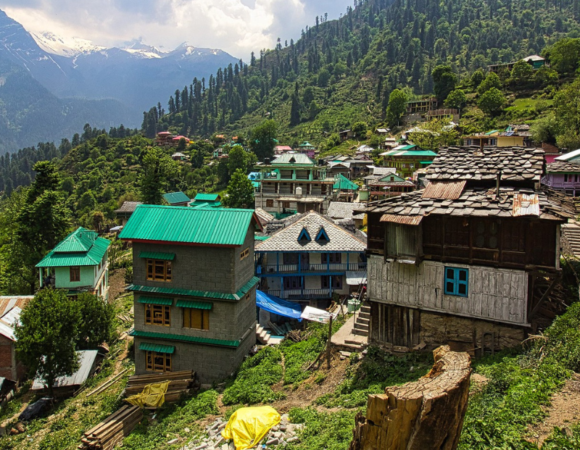
10 Best Hill Station In Himachal Pradesh, Highlights, FAQ’s
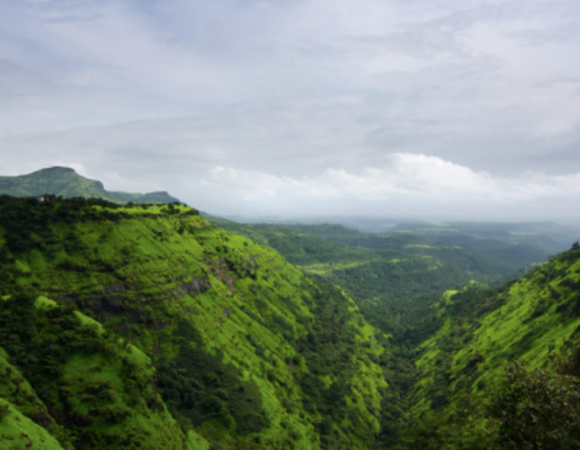
10 Best Hill Stations In Maharashtra, Highlights & FAQ’s
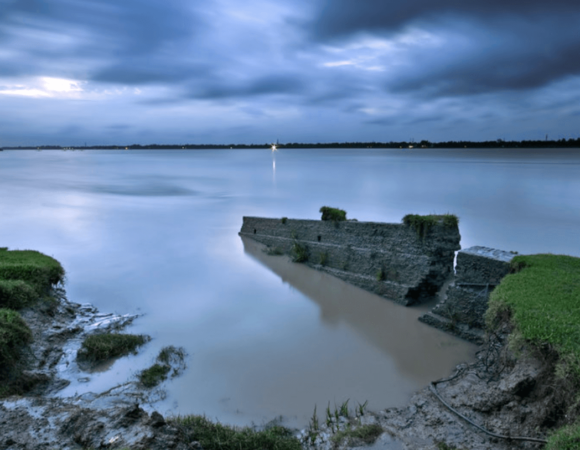
10 Best Hill Stations In West Bengal – Best Time, How to Reach Highlights & FAQs
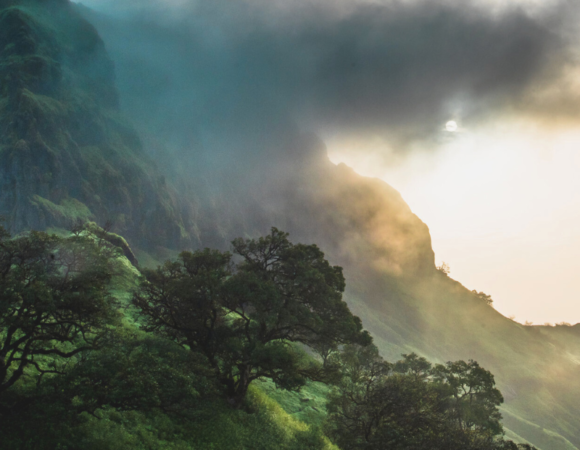
10 Best Maharashtra Trekking Places, Highlights, Treks & FAQ’s
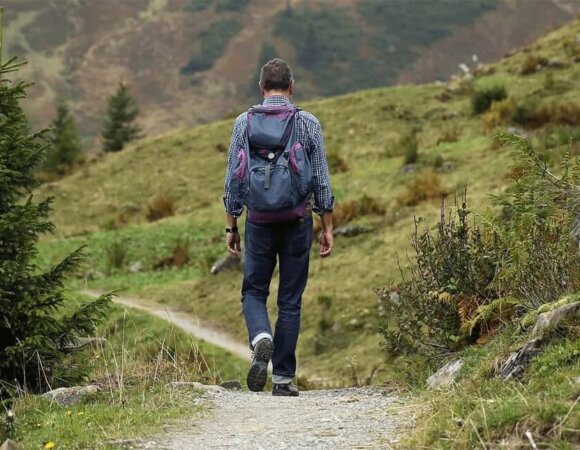
10 Best Trekking Places Near Delhi In 2024 & FAQ’s

10 Best Treks in Himachal That You Can Do in Winters
5 thoughts on “manimahesh trek guide 2024: history, highlights, best time, how to reach & itinerary”.
[…] surely have heard about the thrills of Kumaon Himalayas and you can definitely not ignore the amazing treks it offers you. Today you get to know about […]
[…] Kumaon range in the Himalayas is known to be pristine and serenic and is the hub for various adventurous treks. One such trek is […]
[…] Read alos Manimahesh Trek Himachal […]
Add a Comment Cancel reply
Save my name, email, and website in this browser for the next time I comment.
Things To Carry On Your Trek
Book your experience with us.
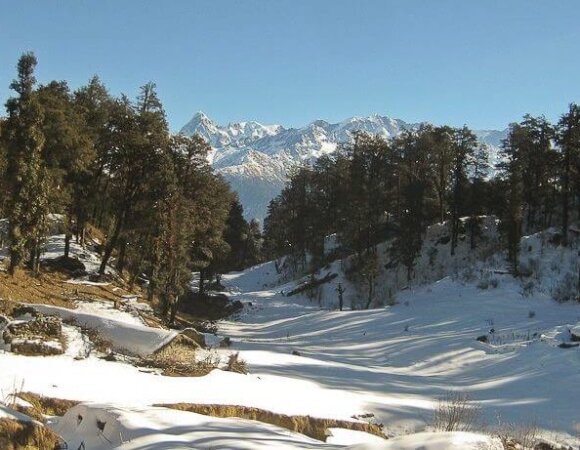
- Amenities 5
Dayara Bugyal Trek
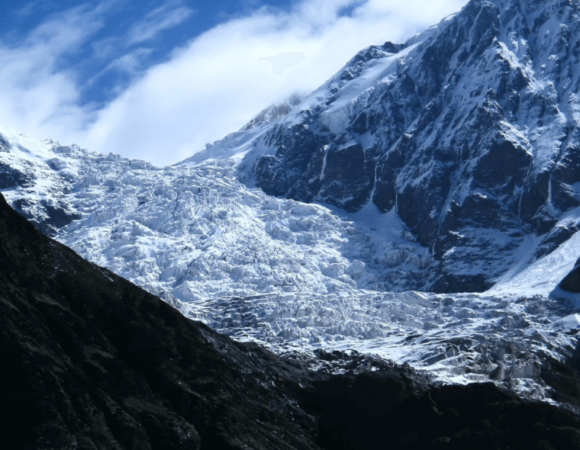
Pindari Glacier Trek
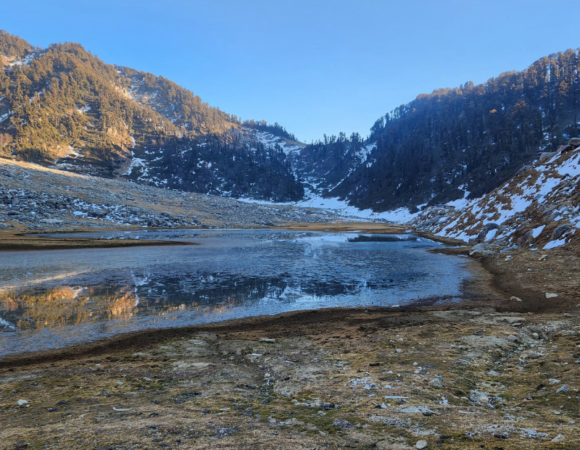
Kareri Lake Trek
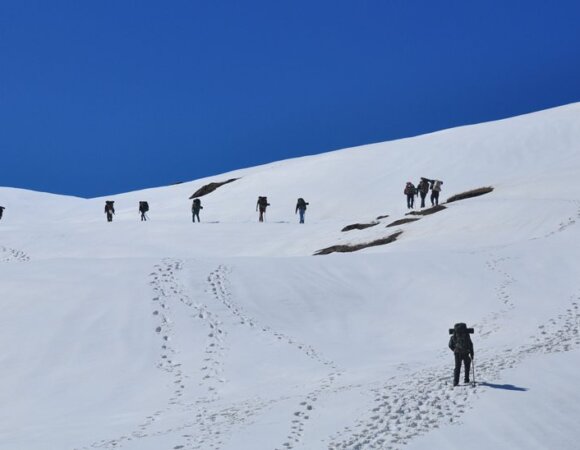
Panwali Kantha Trek
Book your unforgettable experience with us, reset password.
WhatsApp Us
- More Networks

Manimahesh Chamba/ Manimahesh Yatra
Manimahesh, "the abode of lord shiva" in chamba, himachal pradesh.
The Himalayan Mountains in India have been considered an extraordinary place religiously and mythologically. Lord Krishna has also said for the Himalayan mountain, "I am the Himalayan among the mountains". This Himalayan mountain is also the origin of the Ganges, considered the most sacred in Hinduism. Mount Kailash is also situated in the Himalayas.
Apart from Mount Kailash, Manimahesh(altitude of 4,080 metres), situated near Chamba district in Himachal Pradesh , is also one of the important pilgrimage sites of Lord Shiva. In the Hindu religion, Manimahesh Lake has religious importance equal to Mansarovar Lake. Like Mount Kailash, there is also a mountain near Manimahesh called Manimahesh Kailash Peak.
To date, no human has climbed Mount Kailash near Mansarovar Lake. In the same way, no one has risen to Kailash Peak, situated near Manimahesh. According to a legend associated with Manimahesh, a local shepherd tried to climb Kailash Peak with his flock of sheep, but he, along with his sheep, turned into stone while climbing the mountain.
Residents believe that the hills of Manimahesh, situated at an altitude of 4,080 metres, are the remains of that shepherd and his flock of sheep.
Also Read: Mashobra
The residents hear many legends and mythological stories about the formation of Manimahesh Lake, located in the Pir Panjal mountain range of the Himalayas. Some of these unbelievable stories have been in many religious texts of Hinduism. According to the most recited legend here, Lord Shiva created Manimahesh after his marriage to Goddess Parvati.
The people living in the Gaddi Valley are called Gaddis. The people of the Gaddi tribe here worship Lord Shiva as their presiding deity. Mythology and many religious texts also refer to Lord Shiva doing penance at this place for many years. It has believed that due to the displeasure of Lord Shiva, avalanches and heavy snowfall occur here.
Lord Shiva is said to have gifted Chuhli Topi (pointed cap) as a blessing to the Gaddi tribe living near Mount Manimahesh Kailash. They wear this cap, their traditional Chola (coat), and a Dora (a long black rope of 10-15 meters) tied around their waist. The people of the Gaddi tribe call this holy land "Shiv Bhoomi" and call themselves devotees of Lord Shiva.
According to legend, after Lord Shiva married Mother Parvati at Lake Manasarovar, he created Mount Kailash and became the parent of the entire universe.
Manimahesh has believed to be the heaven of Lord Shiva, and the spring near Dhancho has believed to be the heaven (Vaikuntha) of Lord Vishnu. A mound located near Bharmour is called the heaven of Brahma ji.
Also Read: Shakti Peeth
Manimahesh Trip/ Manimahesh Yatra
Every year in the month of Bhadrapada (August, Krishna Janmashtami to September,Radha Ashtami) , according to the Hindu calendar, a vast fair has organized on the Manimahesh Lake on Purnima/new moon. This fair lasts for seven consecutive days and is also called Manimahesh Yatra. On this journey, the devotees reach on foot barefoot after covering a distance of about 14 km. The Yatra also involves a procession singing a hymn locally known as the "sacred chhari" (the stick carried by the pilgrims).
Thousands and lakhs of devotees from all over India come to bathe in the holy lake in this fair dedicated to Lord Shiva.
According to the residents, Mount Manimahesh Kailash protects them from any disaster. Due to this religious belief, the local people worship this vast mountain.
A visit to Manimahesh Lake is considered complete with visiting the Bramhani Devi Temple, located at a distance of 04 KM from Bharmour. Manimahesh Yatra is believed to be only done with taking a bath in Bramhani Devi Kund. Before Manimahesh Lake, two kunds also came, known as Kamal Kund and Gauri Kund.
How Many Days Does Manimahesh Trip Take?
A Manimahesh trip typically takes around 3-4 days, depending on various factors such as the mode of transportation, the starting point of the journey, and the time spent at the destination. Here is a general breakdown of the duration:
Day 1: Arrival and Travel to Chamba or Bharmour
Start your journey from your origin and travel to Chamba or Bharmour, the nearest town to Manimahesh.
The travel time will depend on your starting point and mode of transportation (road or air).
Day 2: Trek to Manimahesh Lake Base Camp
Begin early in the morning and embark on a trek from Bharmour or Hadsar (depending on the chosen route) to reach the base camp near Manimahesh Lake.
The trek can take approximately 5-7 hours, depending on your fitness level and the chosen route.
Day 3: Visit Manimahesh Lake and Return
Explore the serene beauty of Manimahesh Lake, considered a sacred site by Hindus.
Spend time offering prayers, soaking in the natural surroundings, and immersing yourself in the spiritual ambiance.
Trek back to Bharmour or Hadsar and rest for the day.
Day 4: Return Journey
Start your return journey from Bharmour or Chamba to your place of origin.
The travel time will depend on your destination and mode of transportation.
It is important to note that the duration of the trip can be adjusted according to your preferences and the time you wish to spend at each location. Additionally, weather conditions and other factors can affect the accessibility of Manimahesh Lake, so it is advisable to check local conditions and plan accordingly.
Manimahesh Trek Route From Delhi
Manimahesh's climb is relatively easy, but it is not easy either. The month of August to September is most suitable for visiting this temple. But due to hill climbing, climbing is possible for four to five hours a day. The journey to Manimahesh is at least seven days from Delhi. Broadly, the route to Manimahesh is - New Delhi - Dharamshala - Hardsar - Dancho - Manimahesh Lake - Dancho - Dharamshala - New Delhi.
After reaching New Delhi, leave for Dharamshala.
(Dharamshala-Harsar-Dhancho, located at an altitude of 2280 meters) Harsar to Dhancho, which is 4 km away but takes 3 hours to go. Here, Mahant Shri Krishna Muni ji makes an excellent arrangement to spend the night with food etc.
(Dhancho - Manimahesh Lake, situated at 3950 m.) The climb from Dhancho to Manimahesh is long and the most challenging stage of this journey. One has to climb continuously on this route. The night needs to be spent at the camp.
(Manimahesh Lake-Dhancho) Commencement of the return process. Under this, the first day has to be spent in Dhancho.
(Dhancho-Dharamshala)
Once you arrive in Dharamshala, you'll have the opportunity to explore several Buddhist monasteries that will leave you feeling spiritually rejuvenated. After taking in the sights of this tranquil area, it's time to head to Pathankot for the evening. When you're ready to leave, you can catch a train or hit the road for a scenic journey back to Delhi.
The trek becomes easier when going from the Chamba base. Pilgrims can also use this route if they wish.
Also Read: Nartiang Durga Temple
Miracles and Secrets of Manimahesh
People have unwavering faith in God. The proof of their belief is found occasionally in the miracles happening in many religious places. Lord Shiva is believed to reside here today and gives the devotees darshan. Here one also learns different miracles and mysteries under the different stages during the famous Manimahesh Yatra of North India.
1. Manimahesh Mountain remains a mystery to everyone
Mountaineers conquer Mount Everest, the highest peak in the world. But everyone falls on their knees when it comes to Mount Manimahesh Kailash. Many people tried to reach Shiva's abode but have yet to return. At some distance, they became stone. There are many popular, exciting stories in this regard. Anyone who tried to climb was turned stone or died due to landslides. Those who attempted unsuccessfully to climb it bowed down and never considered conquering it again. This holy mountain comes under the Bharmour sub-division in the Chamba district of Himachal Pradesh, world-famous as Manimahesh Kailash Mountain.
Manimahesh Mountain remains a mystery to everyone, even today. Invisible forces stop a person from climbing it. The weather suddenly turned sour whenever any human or other creature tried to rise. In such a situation, the climbing became so complex that the climbers had to return. Landslides sometimes force the climbers to retrace their steps. Manimahesh has always been the center of the faith of devotees.
2. Unsuccessful Italy and Japan team
An Italian team attempted the climb in 1965. But during this, suddenly the weather turned bad. Due to this, the climbing became very difficult, and this team could not succeed. In 1968, a collaborative group of Indian and Japanese women attempted to climb Mount Manimahesh. But suddenly, a landslide started, due to which some people died, and some people barely survived. It also said that no airplane or helicopter has been able to fly over it.
3. Devotees stay awake all night to see the shining gem
A gem shines on Manimahesh mountain in the fourth quarter of the night, i.e. Brahma Muhurta. Its brightness is so high that its light is visible far and wide. Devotees stay awake all night to see the shining gem. The secret is that the sun rises much later than when the glory shines. This gem is the reason why this holy mountain is known as Manimahesh.
4. The story of Dhanchau is also unique .
During the Manimahesh Yatra, devotees must travel to the holy Manimahesh Dal Lake via Dhanchau. The story of Lord Shiva behind Dhanchau is viral. The story goes like this once, a demon named Bhasmasur did severe penance to get the blessings of Lord Bholenath. Bholenath was pleased with Bhasmasur's penance and asked him to ask for a boon. He asked for a boon that he would turn into ashes on whose head he lays his hands. Lord Bholenath also gave this boon to Bhasmasur. But, during this time, Bhasmasur had a mistake in his mind, and he went ahead to burn Bholenath. During this, God came from there and took shelter in Dhanchau, where he could not find Bholenath. Meanwhile, Lord Vishnu took the form of Mohini and reduced Bhasmasur to ashes.
5 The surprising secret of Shiv Gharat
Devotees are pretty surprised by the mystery of Shiv Gharat during the Manimahesh Yatra. There is such a place between Dhanchau and Gaurikund where the sound of Gharat churning has been heard on reaching. During this time, a house is roaming in the mountain at that place. This place is known as Shiv Gharat. Devotees come to the said place during the Yatra to hear the sound of Shiv Gharat.
How To Reach
To reach Manimahesh, a sacred mountain and pilgrimage site located in the state of Himachal Pradesh, India, you can follow these general steps:
1. Choose your mode of transportation
Manimahesh is situated in the Chamba district of Himachal Pradesh. The nearest major town is Bharmour. You can reach Bharmour by road from various cities like Pathankot, Dharamshala, or Chamba. After reaching Bharmour, you can proceed further to Manimahesh.
2. Reach Bharmour
By air: The nearest airport is Kangra Airport in Dharamshala, which is well-connected with major cities in India. You can hire a taxi from the airport or take a bus to Bharmour.
By train: The nearest railway station is Pathankot Railway Station. You can hire a taxi or take a bus to Bharmour from there.
By road: Bharmour is well-connected by road. You can take a bus or hire a taxi from nearby cities like Pathankot, Dharamshala, or Chamba.
3. Bharmour to Hadsar
From Bharmour, you need to reach Hadsar, the starting point of the trek to Manimahesh Lake. Hadsar is approximately 13 kilometers from Bharmour.
You can hire a taxi or take a shared jeep from Bharmour to Hadsar. It is advisable to arrange the transportation in advance.
4. Trek to Manimahesh
From Hadsar, the trek to Manimahesh Lake begins. It is approximately 14 kilometers and takes about 6-8 hours, depending on your fitness level. The trail passes through scenic landscapes and involves a gradual ascent. There are small shops and refreshment points along the way.
It is advisable to carry essentials such as water, snacks, warm clothing, rain gear, trekking shoes, and a walking stick. The trail is well-marked, and you can also hire a local guide if needed.
5. Arrival at Manimahesh Lake
After completing the trek, you will reach the sacred Manimahesh Lake. The lake is surrounded by breathtaking mountains and is considered holy by devotees.
You can dip in the lake, offer prayers, and soak in the spiritual atmosphere.
Temporary accommodations and tents are available near the lake for overnight stays if you wish to spend more time there.
Please note that the accessibility and conditions may vary, so it's always a good idea to check the current situation, weather conditions, and local guidelines before planning your trip to Manimahesh.
Chamba to Manimahesh distance= 51.1KM
Distance between Chamba to Bharmour=59KM
Manimahesh to Kailash Parvat distance=463KM
Delhi to Manimahesh distance=413KM
Shimla to Manimahesh distance= 152 KM
Chandigarh to Manimahesh distance=185 KM

Did you find this article informatory?
Can you please help us improving it, best time to visit, related articles.
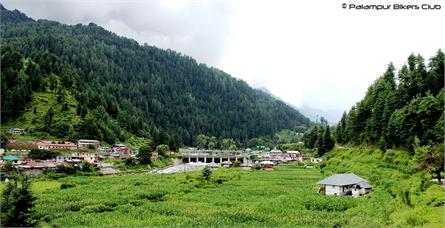
Explore The Beautiful Hill…
Barot of Chauhar Valley of Mandi district is excellent and attractive,…
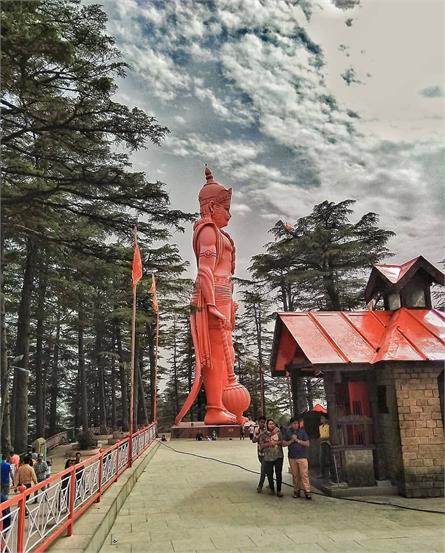
Jakhu Temple: A Must-Visit…
Jakhu Hill, The Most Famous Temple In Shimla Known Worldwide For its…
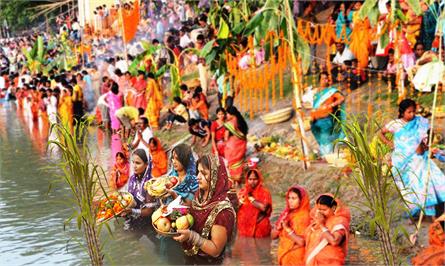
Chhath Puja: an Honor to Sun…
Dedicated to the Sun and Shashthi Devi (Chhathi Devi), Chhath is a major…
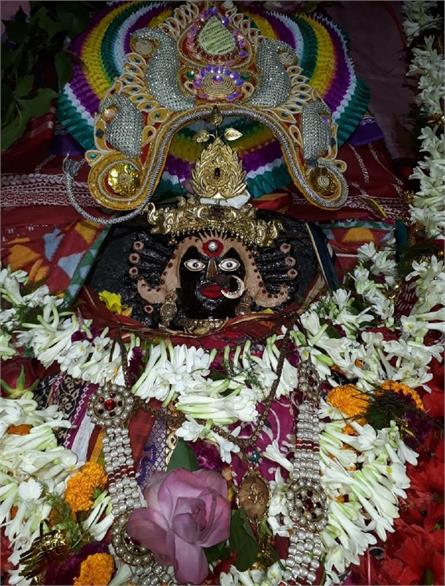
Biraja Temple, Biraja Kshetra…
Biraja Temple is one of the beautiful temples of Jajpur, located in the…
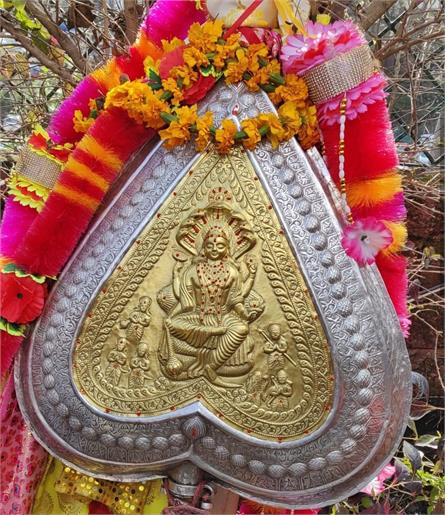
Mysterious Kamrunag Temple…
Himachal Pradesh is blessed with many beautiful mountains and lakes. Such…
Stay Informed! Subscribe to Our Newsletter
Join thousands of others in receiving exclusive updates, fascinating articles, and exciting insights straight to your inbox!
we're committed to providing you with the latest and most comprehensive information on a wide range of topics. By subscribing to our newsletter, you'll gain access to:
Exclusive Updates:
Be the first to know about new articles, features, and updates on our website
Curated Content:
Receive handpicked articles, insights, and recommendations directly from our team of experts.
Community Insights:
Join a thriving community of like-minded individuals passionate about learning and knowledge-sharing.
Join Our Newsletter to Dive Deeper!

Ambika Mata Temple
It is believed that it is the holy place where Devi Sati’s left toes fell down,…

Andaman and Nicobar Islands
If you are experiencing the sight of exotic beaches, beautiful flora, rare…

Shimla - Nature and Culture Intertwined
The capital town of Himachal Pradesh, surrounded with serenity in the…

Jammu and Kashmir - The Crown of India
Located in the Himalayan mountains and shares a border with the states of…
Join Us Today!
Enter your email address below to subscribe to our newsletter and start exploring a world of knowledge!
- The Original Series
- The Animated Series
- The Next Generation
- Deep Space Nine
- Strange New Worlds
- Lower Decks
- Star Trek Movies
- TrekCore on Twitter
- TrekCore on Facebook

The now-tossed Star Trek 4 went through many iterations since the first announcement in July 2016 , including a story by legendary Hollywood director Quentin Tarantino, a surprise 2022 Kelvin cast announcement that apparently Chris Pine and company only learned about through the press, and prequel story set “decades before the 2009 film.”
Following the new Star Trek 5 announcement, star Chris Pine reportedly reacted “with a deep sigh” according to Deadline . “Chris is excited learn about this new film through today’s studio announcement,” said a representative for the actor, “because it went really well the last time this happened, right?”
Also expected for the Trek 5 reunion are co-stars Zachary Quinto (Spock), Zoe Saldana (Uhura), Simon Pegg (Scotty), Karl Urban (“Bones” McCoy), and John Cho (Sulu). Actor Anton Yelchin, who portrayed Chekov in the first three films, passed away in 2016.
While little is known about the planned story of this new film, sources close to Trek 5 development hear that Paramount is pursuing Dune and Wonka star Timothée Chalamet for the role of “Sybok,” half-brother of Spock, originated by actor Laurence Luckinbill in 1989.
- Behind The Scenes
- paramount pictures
- Star Trek 5
Related Stories
Interview — sonequa martin-green on her star trek: discovery producer role, proudest moments, and more, vice press celebrates star trek: the original series with a new poster from artist lyndon willoughby, new star trek: discovery season premiere photos — “red directive” and “under the twin moons”, search news archives, new & upcoming releases, featured stories, our star trek: discovery season 5 spoiler-free review, star trek: discovery’s final adventure begins in april 2024, interview — star trek: lower decks’ mike mcmahan on moopsy, creating the orion homeworld, tuvix, and much more.
TrekCore.com is not endorsed, sponsored or affiliated with Paramount, CBS Studios, or the Star Trek franchise. All Star Trek images, trademarks and logos are owned by CBS Studios Inc. and/or Paramount. All original TrekCore.com content and the WeeklyTrek podcast (c) 2024 Trapezoid Media, LLC. · Terms & Conditions
Shikhar Blog
Travel Experiences – Sharing Travel Memories Around the World
The Manimahesh trek: The abode of Hindu deity
It is believed that mountain ranges hide several mysteries and grandeur around them. Mountains of Manimahesh Kailash trek may not be as iconic as others. The undeniable majestic view and quiet water of the lake offer all the splendor and escape that mountain enthusiasts treasure. It is seen as one of the most appealing treks when we talk about Himachal Pradesh.
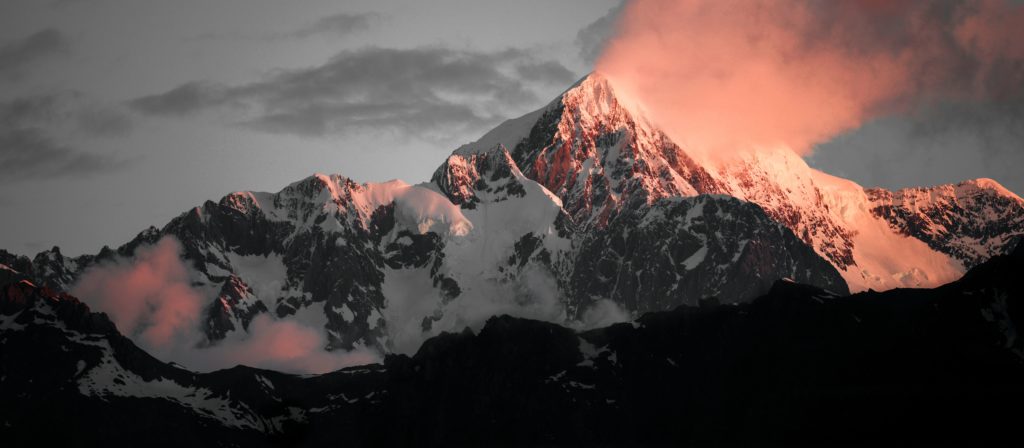
Located in Chamba district of Himachal Pradesh, Manimahesh Kailash peak is placed at an altitude of 13,000 feet. The major magic of Manimahesh trek is Manimahesh Lake . The name Manimahesh means ‘Shiva’s jewels’, it is said that Lord Shiva created this magnificent trek after he married Goddess Parvati. People believe that every year on the occasion of Janmashtmi and Radhaashtmi, Lord Shiva and Goddess Parvati take holy bath in the lake water when a gleaming mani is seen on the top of Manimahesh peak . A marble image of Lord Shiva is made at one corner of the lake and people from all over the world assemble here to worship that image. Pilgrims take bath in the holy water and then take three rounds around the boundary of the lake. This peak is believed to be the abode of Lord Shiva.
The pilgrimage to Manimahesh offers divine satisfaction to a pilgrim when he/she get darshan of Mount Kailash and take a holy dip in the significant Manimahesh Lake at the same time. This Yatra usually starts on Krishna Janmashtami and ends on Radha Ashtami every year. People from different places come here for making their prayers answer and to overcome all their sorrows in life. If you believe in Lord Shiva, you can book for Manimahesh Kailash yatra through Shikhar Travels. They ensure that you experience the cultural nuances of such a holy place which will rejuvenate your body and soul.
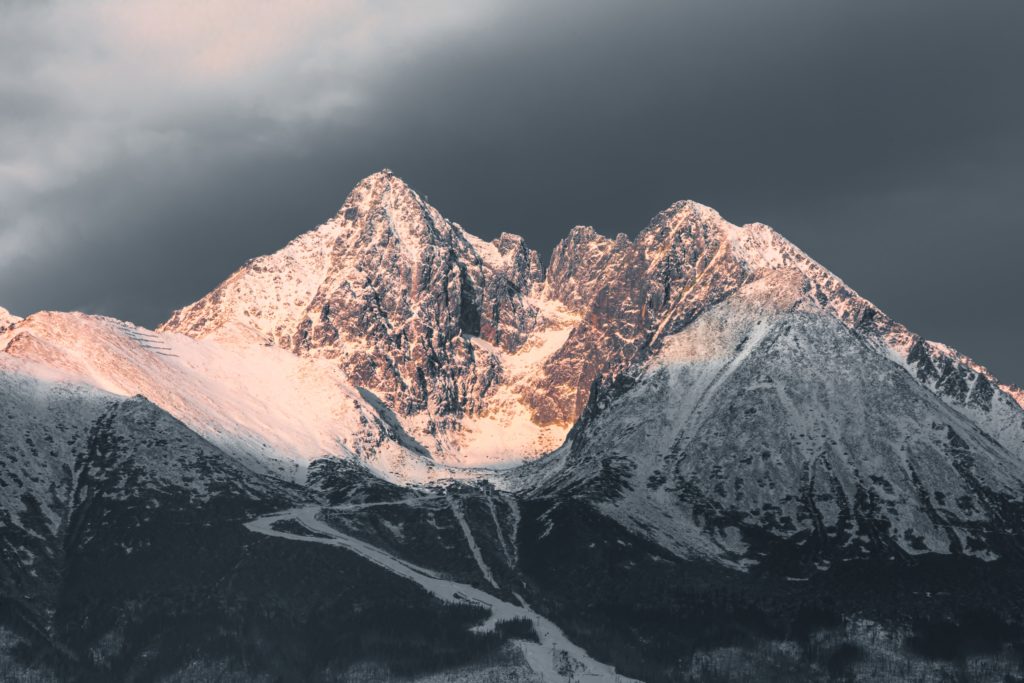
Start to End:
Pilgrims from all across the country come for Manimahesh Yatra which usually starts from Lakshmi narayan Temple located in Chamba and finishes at the Manimahesh Lake present in the Budhil Valley. Manimahesh trek revolves around the famous lake has a pious significance as it is found next to significant the Mansarovar Lake in Tibet. People usually visit here to take bath in its holy water. The trek commends on Krishna Janmashtami and ends on Radha Ashtami. You will feel best after watching the captivating mountains and greenery around the lake. Another is the show of light and fog which is compelling. The clean and uncontaminated water in the lake is believed to overcome all the stress in your life.
Famous attractions of the Manimahesh Trek:
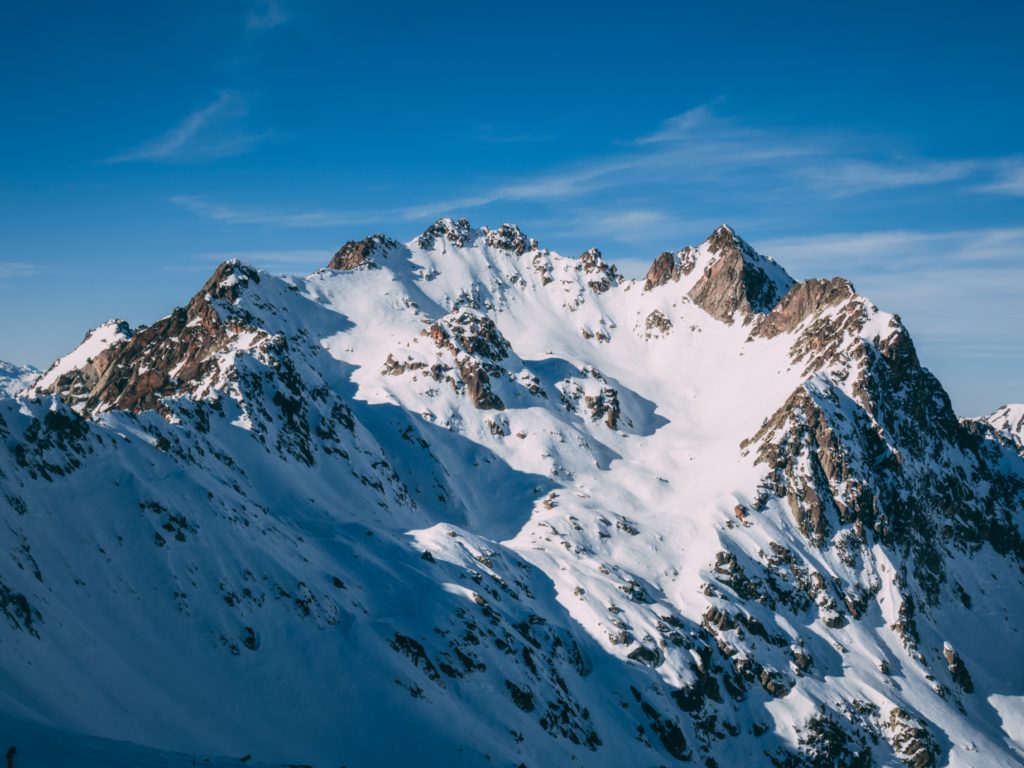
As mentioned above, Manimahesh Kailash Yatra is mainly famous for the sacred Manimahesh Lake. Other than this, the pilgrim can visit the two famous temples in Chatrari, which are dedicated to Shakti Devi and Lakhna Devi. You must know that in your way of a trek to Manimahesh, you will go through Gauri Kund, the lake of Goddess Parvati. One of the major attractions on this trek is Chaurasia and Kugti which are known for their 84 shrines and an enticing panorama of the coniferous forests respectively. The stiff architecture and the ringing idols of Bharmour do impress the pilgrims.
All the trek lovers book your Manimahesh trekking expedition and fulfil your trekking dreams!
Pingback: Manimahesh Yatra with Indian family & other members from Hyderabad - Shikhar Blog
Pingback: Manimahesh Lake Trek / Yatra 2021 - Shikhar Blog
Leave a Reply Cancel reply
Your email address will not be published. Required fields are marked *
Save my name, email, and website in this browser for the next time I comment.
This site uses Akismet to reduce spam. Learn how your comment data is processed .

The students started day four of the trip with a conversation with David Pong , Co-Founder and CEO of Wateroam , an innovative water solutions venture providing safe water to communities in need. So far, the company has supplied 200,000 people with clean drinking water across the globe. David, a social entrepreneur at heart, shared his belief in harnessing the power of business to drive social change and solve the world’s toughest problems.
The group then spent the afternoon at the Go Global: Singapore Health Summit 2024, held by Authentica in collaboration with FlocCare , a Myraa Technologies Group Company. Throughout the event, the students had the opportunity to showcase their startups, as well as engage in learning, interaction, and networking with industry-leaders, impact-makers, and venture capitalists from Singapore and beyond.
On day five, the students met with Dr. Anand Govindaluri , Founder & Group CEO of Govin Holdings. Dr. Govindaluri shared his wealth of knowledge of the healthcare startup ecosystem. He spoke about the successful ingredients required to be a health-tech entrepreneur, his go-to-market strategies, the rise of India as an innovative health-tech economy, and why this matters to Singapore and U.S. startups. He also touched on the power of meditation in managing work-life balance and maintaining sound mental health.
Though the days were jam-packed with entrepreneurial learnings, the trip wasn’t all about business! The students immersed themselves in Singapore’s diverse culture, enjoying local delicacies at the city’s famous Hawker Stalls, and visiting iconic landmarks including Gardens by the Bay, Marina Bay Sands, Haji Lane, and a Buddhist temple. Each experience expanded their understanding and appreciation of Singapore’s dynamic culture.

The week wrapped up with a reflective lunch where each student shared their takeaways from the trip. Though their entrepreneurial endeavors vary, their synopsis of their time spent in Singapore was the same. The trip was a tremendous learning experience that helped them to think big and to think global on their entrepreneurial journeys.
“I had the privilege of joining the recent Singapore Trek as part of the Zell Entrepreneurs. This experience was nothing short of transformative for me and my venture, Current2. The opportunity to forge connections with venture capitalists, incubators, accelerators, and fellow entrepreneurs in Singapore’s thriving startup ecosystem was invaluable. The insights and perspectives I gained from these interactions have reshaped my understanding of the entrepreneurial landscape and provided me with a deeper appreciation for the world-changing possibilities entrepreneurship represents. I am more excited than ever about the field of entrepreneurship and at the prospect of becoming a serial entrepreneur!” – Jake Sadow (BA ’24)
Thank you to all the participating business leaders, founders, and innovators who made this trip such a rich learning experience for our students. Here’s to the bright futures awaiting our Zell Entrepreneurs!
Zell Entrepreneurs is an elite program designed to provide support to students who are dedicated to work on their businesses full-time upon graduation. Students selected to participate in this immersive, year-long program will receive support, mentorship, resources, and funding to get their ventures ready to launch. Zell Entrepreneurs is open to final-year students from all 19 schools and colleges at the University of Michigan Ann Arbor campus.

IMAGES
VIDEO
COMMENTS
The main center of attraction in the Manimahesh Trek is the Manimahesh Lake. This is a high altitude lake situated at an height of 13,390 feet or 4080 meters. This lake faces the Manimahesh Peak directly and one can get a perfect view of the peak from here. There are many legends revolving around the Manimahesh Lake.
Hey, I'm a traveler and Trek enthusiast. Let me share my unforgettable and wonderful trekking experience at Manimahesh Trek. My Manimahesh trek journey began in the beautiful town of Chamba, where I was stuck with the view, I was felt an instant connection with those beautiful landscapes and the hospitality of the local residents.
The region was Himachal and Kinnaur! After a consensus. we finalized the plan to start with High Attitude Jotnu Pass 14300 feet - Manimahesh Trek, Kinnaur Kailash 18,500 feet ( Pillar ) Trek, and Shrikhand Mahadev 17,200 feet Trek or Shrikand Mahadev Trek in the month of June and July.
Manimahesh Kailash Yatra Trek is a popular Himalayan spiritual treks in Himachal Pradesh. Get detailed Manimahesh Kailash Yatra trekking itinerary, trekking route and best time to do this trek. ... Our Latest Informative Travel Blogs. View All Blog. October 13,2020 Explore the Hidden Natural Treasure of Himalayas with These Unexplored Treks in ...
Our first batch to Manimahesh Trek was led by Mr. Anil Bhatt (Tour Manager) on 10 July 2021. With Shikhar Travels. Tour Start from 10 th July to 16 Jul 2021 with Gujrati family. I started my Journey from Delhi I took early morning SHTABDI Train to Chandigarh reached at 1100 am, from there I took auto for Sec 43 bus terminal.
Trekking to Manimahesh Lake: From Hadsar, the real adventure begins with a trek to Manimahesh Lake. The trek is about 13 kilometers long and takes around 6-7 hours, depending on your pace and weather conditions. The trail meanders through dense forests, gushing streams, and rocky terrains, making the journey exciting and refreshing.
Manimahesh Kailash Peak is also known as ChambaKailash, It is one of the virgin peaks in the Indian Himalayan region. It is a moderate-level trek where beginner-level trekkers can also participate. Manimaheshlake is located at an altitude of 4080 m above sea level on the foot ofManimahesh Kailash Peak which has 5653 m in height. It is situated ...
Where is the Manimahesh Kailash Trek. Generally known as Dal Lake, Manimahesh is a high height pool of Himachal Pradesh. The lake is situated at a height of 4,080 meters (13,390 ft), very near Manimahesh Kailash Peak in the Pir Panjal Range of the Himalaya. As per the occurrence distributed in the legendary books, the lake was made by Lord ...
The Route: Hadsar to Manimahesh Lake. The Manimahesh Yatra begins in the village of Hadsar, located a short distance from Chamba district in Himachal Pradesh. From Hadsar, the trek takes you through the picturesque hill village of Dancho, offering beautiful views of the Valley of Flowers and medicinal shrubs along the way.
Book Your Manimahesh Kailash Trek With Tempest Treks. Embarking on the Manimahesh Kailash Parikrama is a journey of a lifetime, an experience that will leave you transformed in every way possible. From the stunning natural landscapes to the spiritual energy that fills the air, this trek is truly unique.
However, the rest of the trek to the Manimahesh Lake is covered barefoot by the pilgrims. Religious belief: According to a local legend, Manimahesh - as the name signifies, refers to a jewel (Mani) on Lord Shiva's (Mahesh's) crown, that imparts its holy darshans (sight) to the devotees when the moon rays reflect from it on a clear, full ...
How To Prepare Physically And Mentally For Manimahesh Kailash Trek. Preparing physically and mentally for Manimahesh Kailash trek is crucial to have a successful journey. It's important to start your physical training at least 3-4 months before the trek. This will give you enough time to build up your stamina and endurance levels.
This is a nice short pilgrimage trek which can be done without a tent during the pilgrim season (summer through september) I camped when I did it as it was late in the season and altready snowed over, but I was still able to stay with a friendly Sadhu by the lake. Its a pretty straight forward trek and since the path is used by millions of pilgrims finding your way shouldn't
People say that the Manimahesh Yatra has similarities to the Amarnath Yatra. People who are unable to make the trek to Amarnath sometimes go to Manimahesh Lake to take an important bath. Nowadays, reaching Manimahesh Lake has become more accessible with helicopter services available from Bharmour to Gaurikund during the yatra.
Get Price Quote on WhatsApp +91-7895990850. Manimahesh Lake Trek. 04 Nights 05 Days, Himachal Pradesh, India. The sacred lake of Manimahesh (4,115m), reflecting the image of the Manimahesh Kailash towering above, draws the faithfuls by the tens of thousands at the time of the annual pilgrimage. My first trip in September 1997 was two days after ...
The trek to Manimahesh Lake starts at Hadsar. On the way to the lake, you will find several resting points, eateries, camps and tents where you can halt your journey and stop for a rest. However, ideally, the next main stop is in Dhancho village. The trek from Hadsar to Dhancho is only 5 - 6 km and can be covered in 3 - 4 hours.
Manimahesh Yatra, also known as the "Kailash of Himachal Pradesh," is a pilgrimage to the holy Manimahesh Lake, located in the Pir Panjal Range of the Himalayas. Situated at an altitude of 4,080 meters, this divine destination holds immense religious and natural significance. Suggested Tour: Manimahesh Kailash Trek.
Dalai Lama Himalayan Trek. From ₹82,500.00 ₹63,500.00. N/A. Day Hikes and Treks. Offer. Manimahesh Lake (also known as Dal Lake, Manimahesh), situated in the Pir Panjal Range of the Himalayas, is a high altitude lake. The Kailash peak stands high close to the lake.
Manimahesh trek is one of the most delightful trips in Himachal Pradesh. Mani Mahesh Yatra is a heavenly spot for Hindus. This place is also called Dal Lake, Manimahesh is a high-height lake rise of 4,080 meters 13,390 ft situated near the Manimahesh Kailash peak in the Pir Panjal valley of the Himalayas, in the Chamba region of Himachal Pradesh.
Day 2: Trek to Manimahesh Lake Base Camp. Begin early in the morning and embark on a trek from Bharmour or Hadsar (depending on the chosen route) to reach the base camp near Manimahesh Lake. The trek can take approximately 5-7 hours, depending on your fitness level and the chosen route. Day 3: Visit Manimahesh Lake and Return
After eight long years, Paramount Pictures today announced that they are ending all development work on the long-gestating fourth entry in the Star Trek Kelvin Timeline film series. "It's clear that Star Trek 4 was just not coming together," said Paramount Pictures CEO Brian Robbins in a statement released today. "While we have great respect for our relationship with JJ Abrams and Bad ...
Located in Chamba district of Himachal Pradesh, Manimahesh Kailash peak is placed at an altitude of 13,000 feet. The major magic of Manimahesh trek is Manimahesh Lake. The name Manimahesh means 'Shiva's jewels', it is said that Lord Shiva created this magnificent trek after he married Goddess Parvati.
TREK Bicycle 浜松 ー 5月18日(土)11時~18時、19日(日)11時~18時 TREK Bicycle 四日市 ー 5月25日(土)11時~18時、26日(日)11時~18時 内容: 即時査定(1件約30分ほどの所要時間)にて、下取り価格をその場でお客様にお伝えします。
There truly are so many ways to easily get from one location to the next at Walt Disney World Resort. Perhaps you and your family even find the complimentary transportation from your Disney Resorts Collection hotel as fun as an attraction in your favorite theme park. And if you are that guest, planDisney supports you! From monorails to buses, water taxis and more … knowing you have ...
Every spring, students participating in the Zell Entrepreneurs program make an international trek to network with fellow entrepreneurs from across the globe. This year's 2023-2024 cohort of Zell Entrepreneurs - Ana Timoficiuc (BSE '24), Faith Richardson (BBA '24), Jake Sadow (BA '24), Jason Obrycki (BSE '24), Karthik Ramani (MBA '24), Karthik Ramasubramanian (MBA '24), Matthew ...